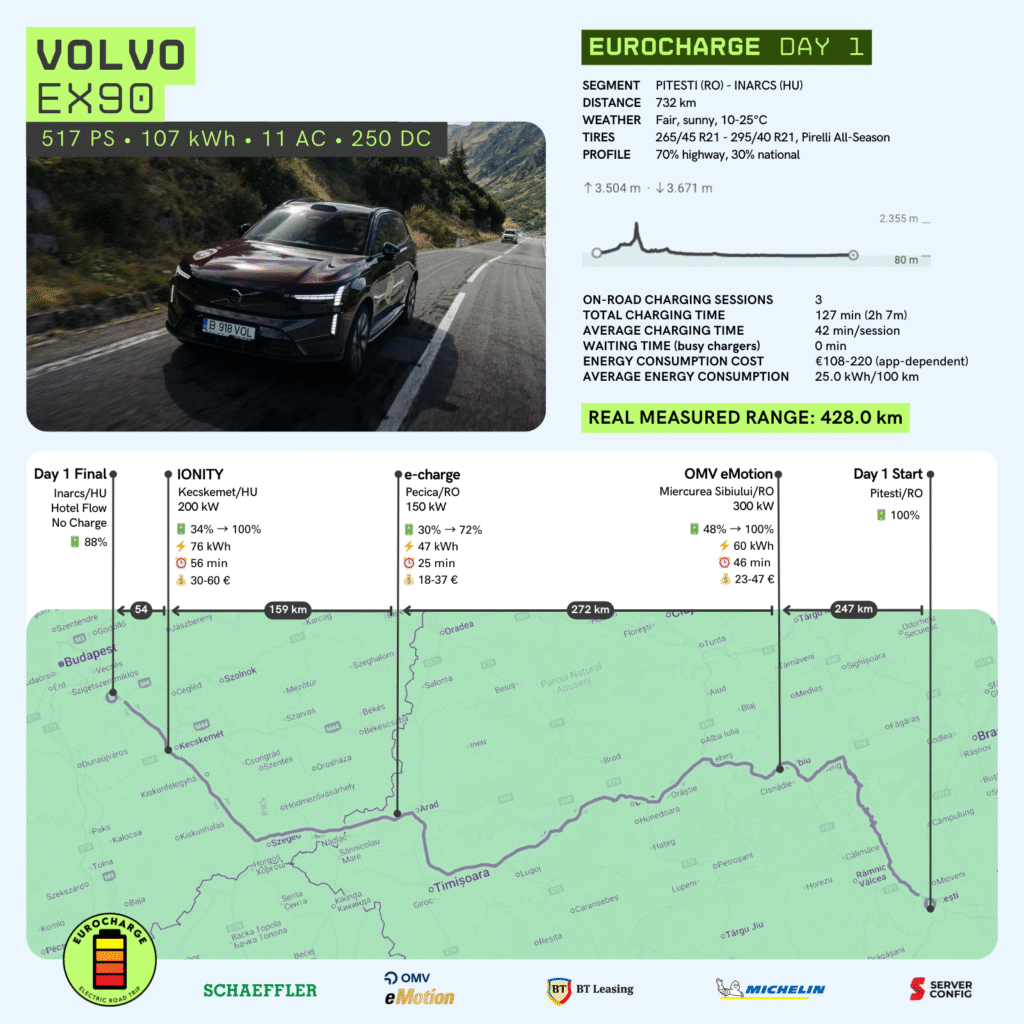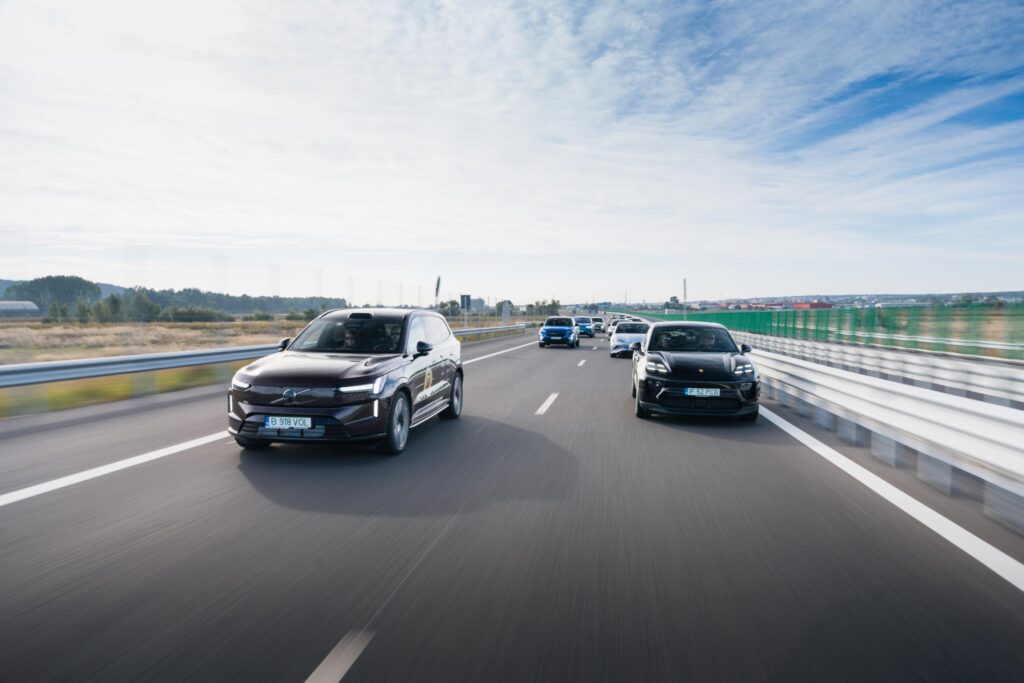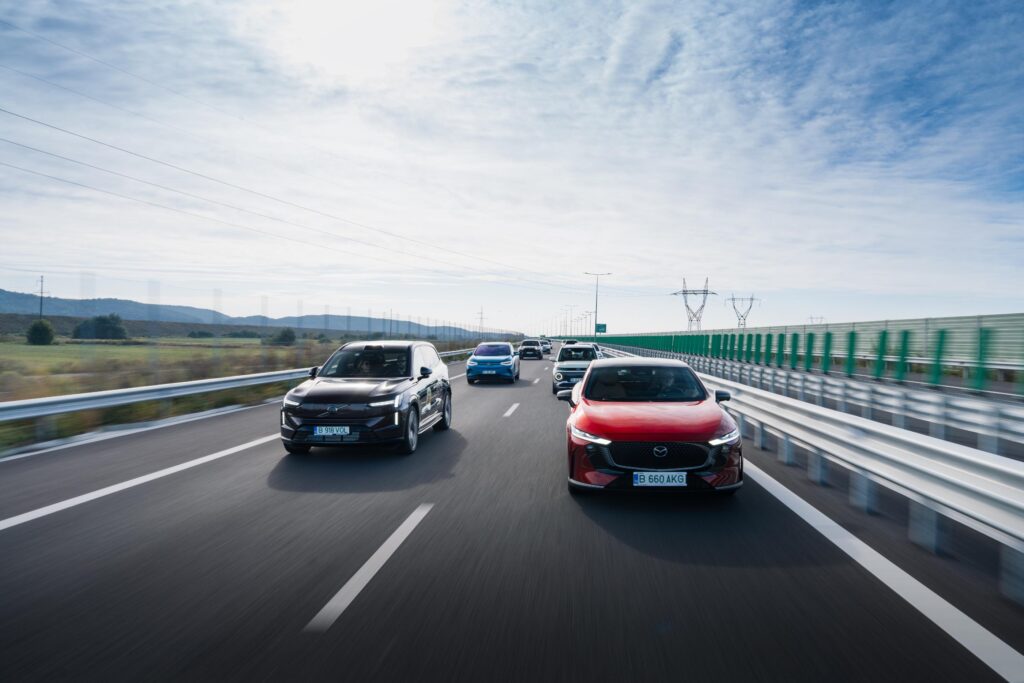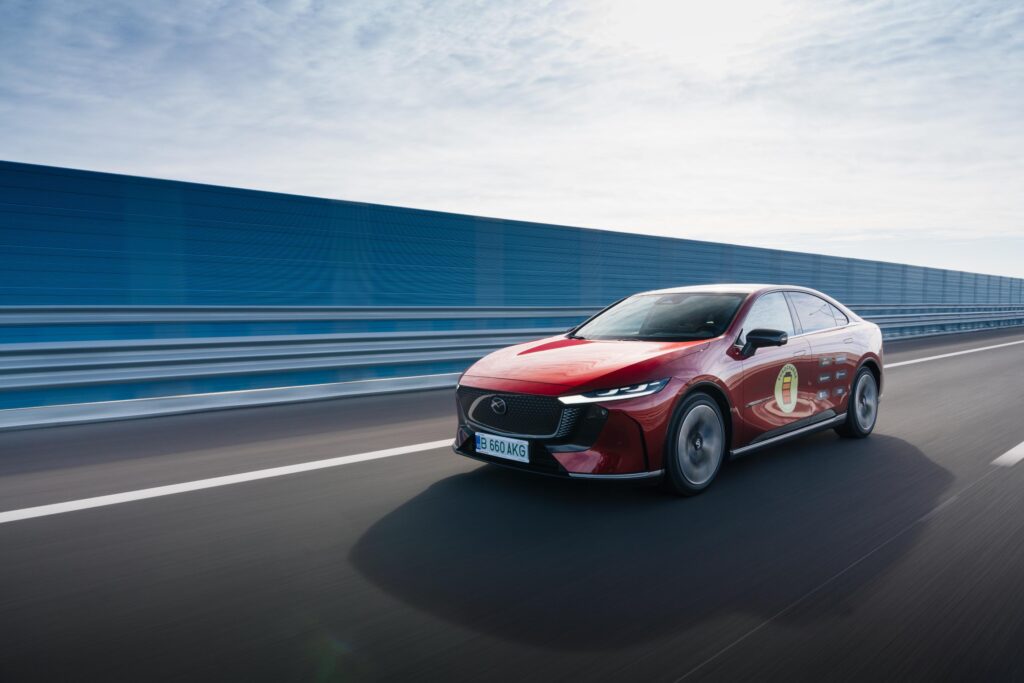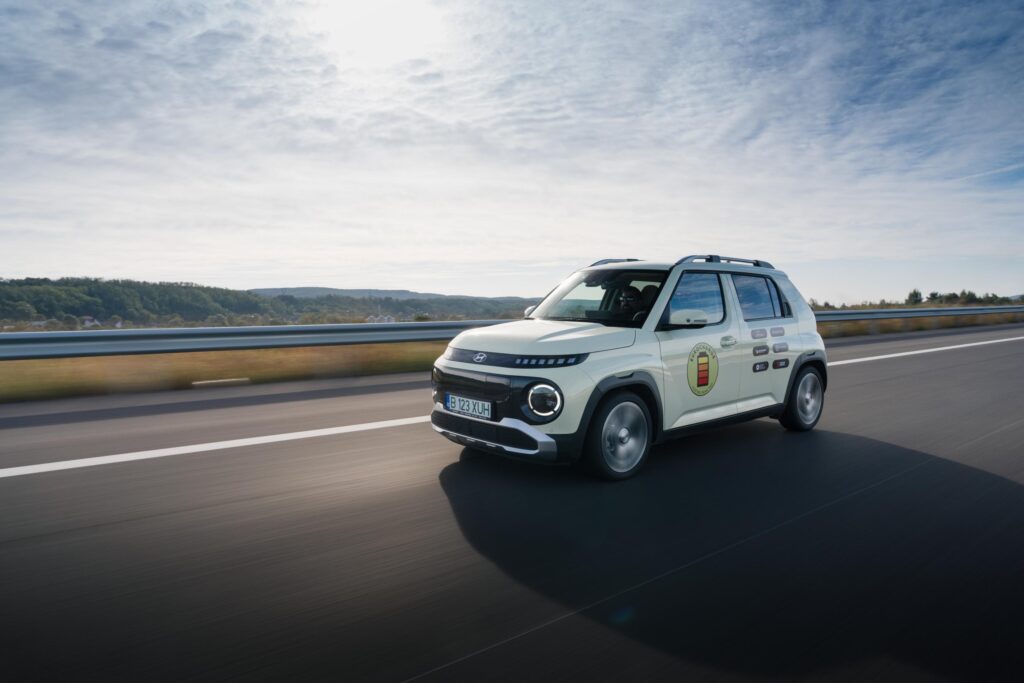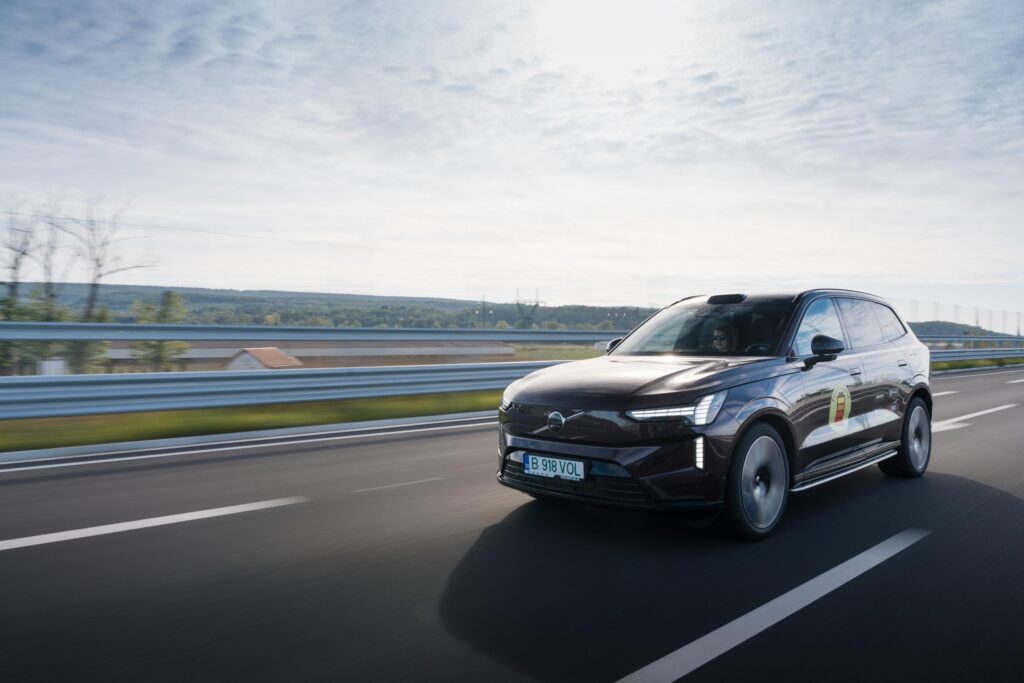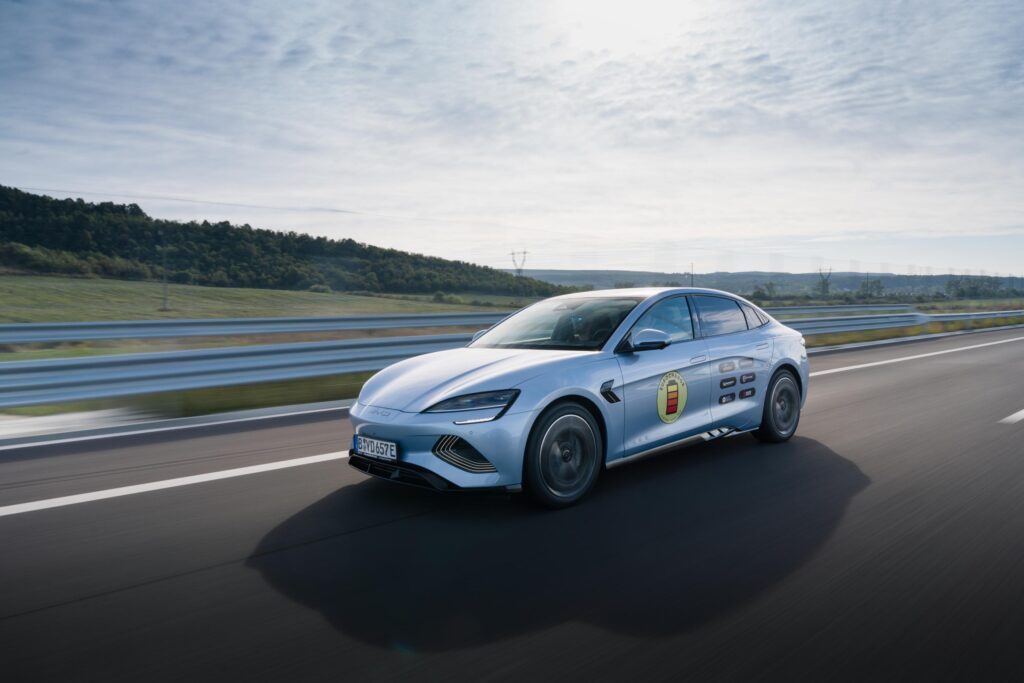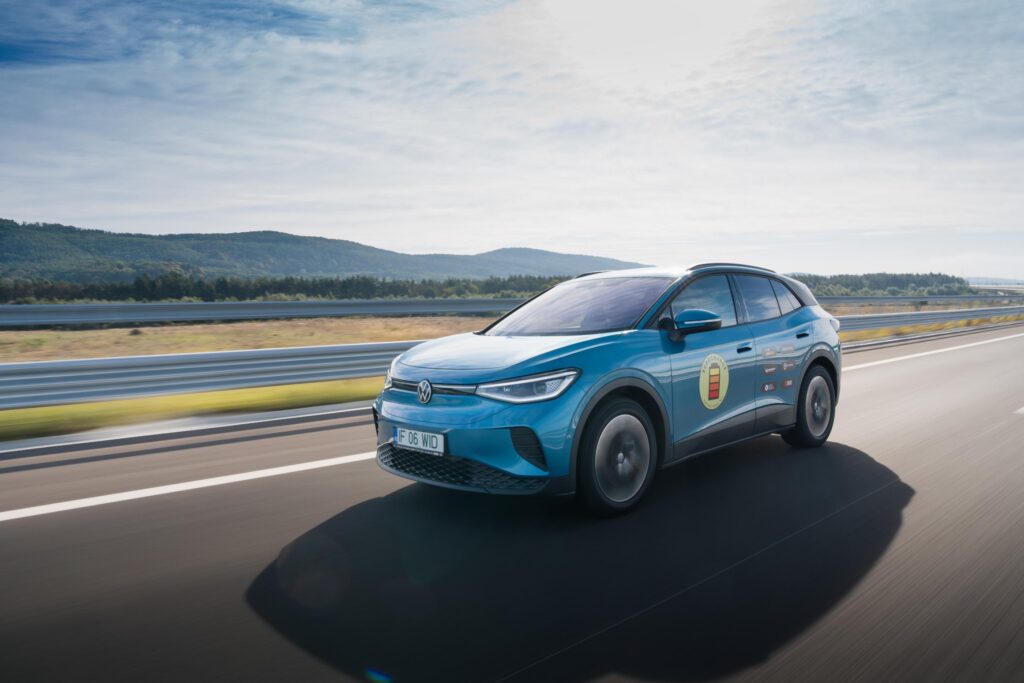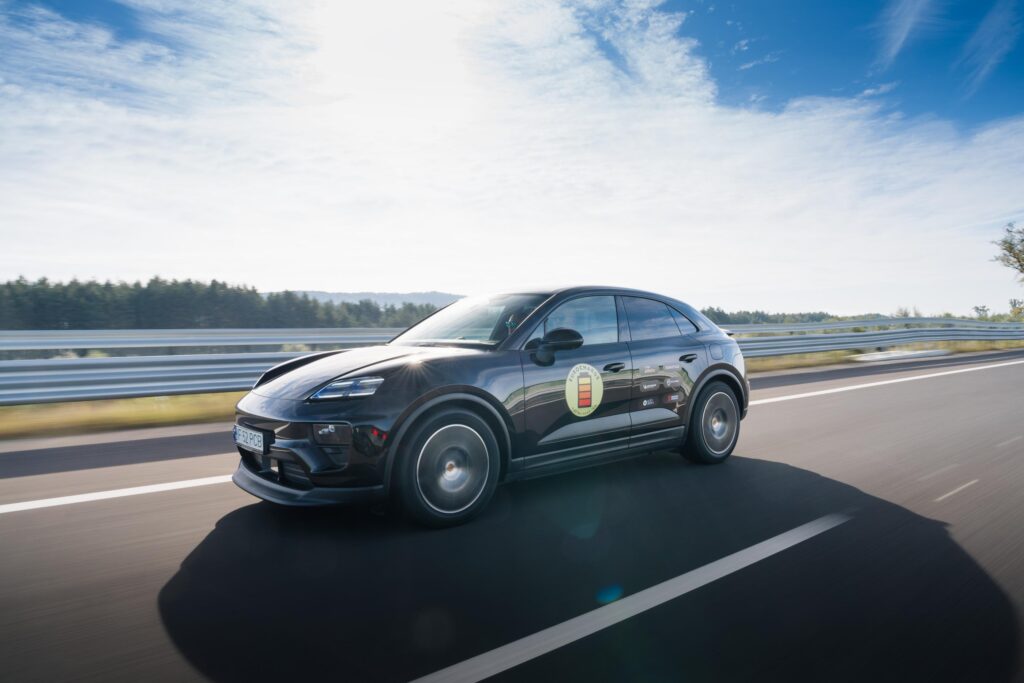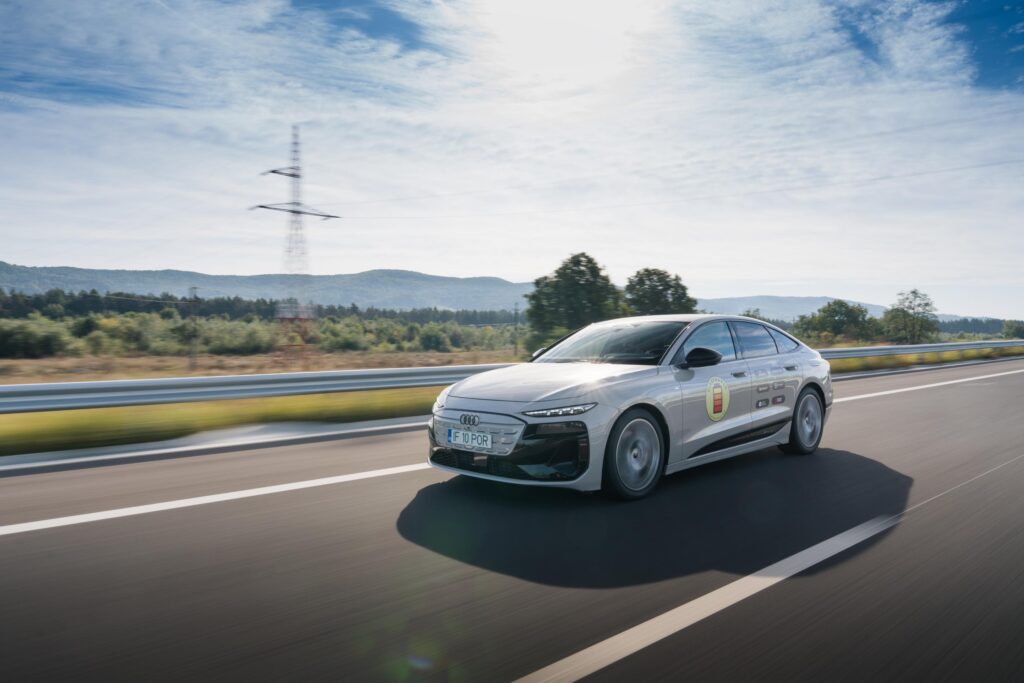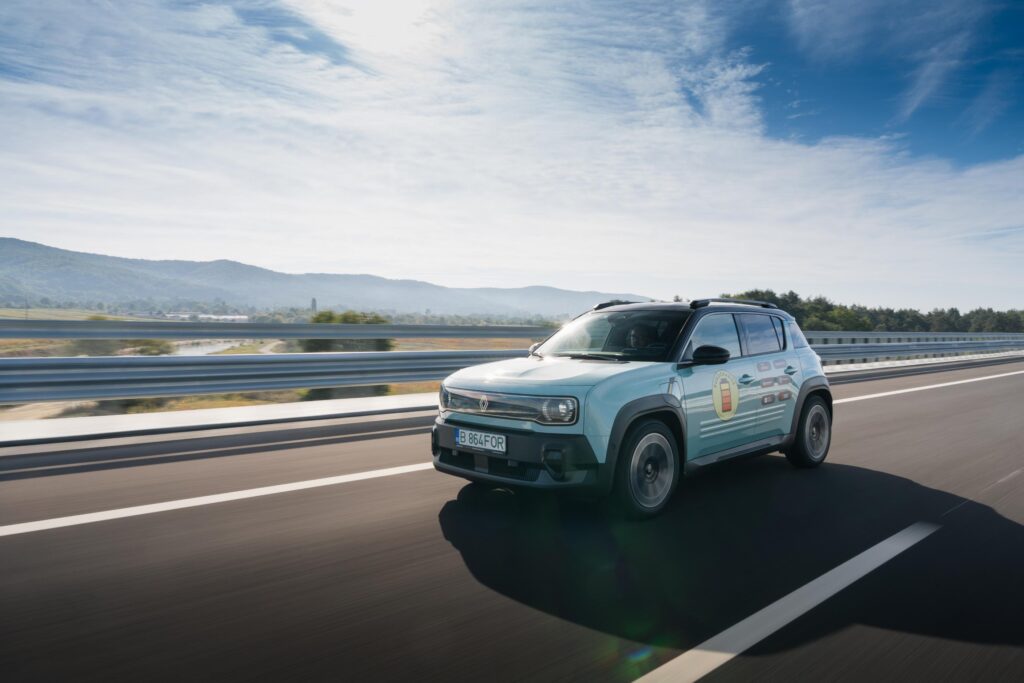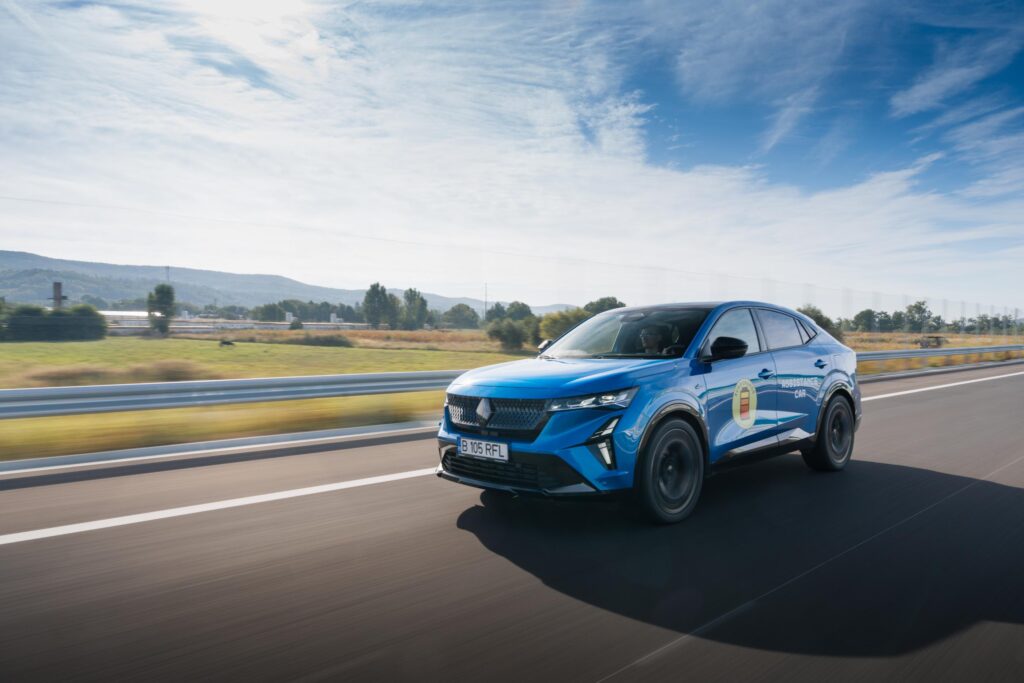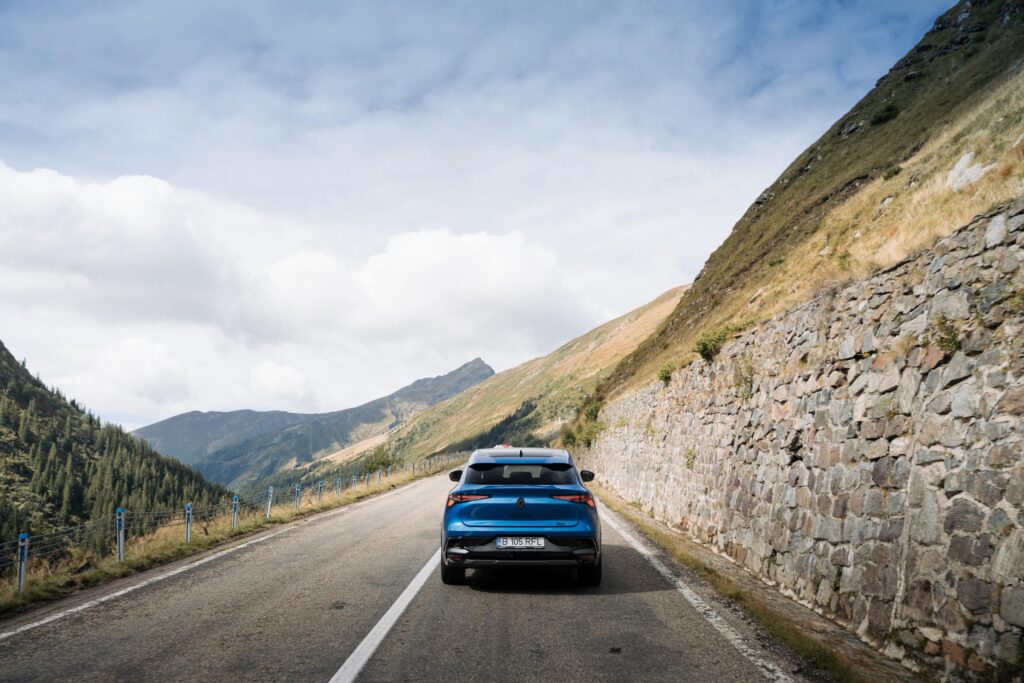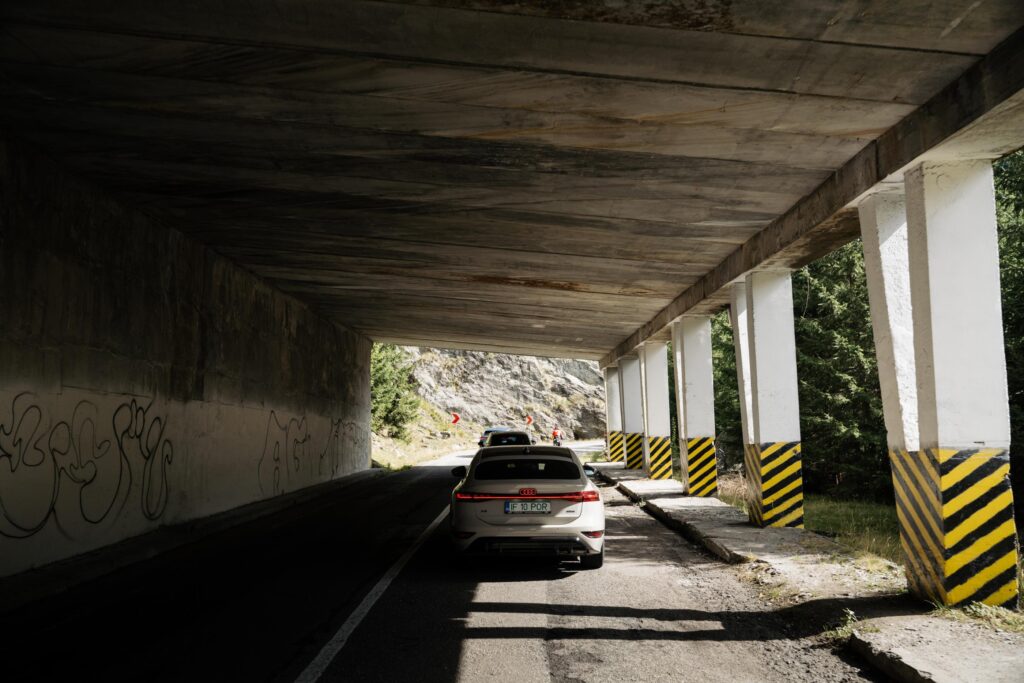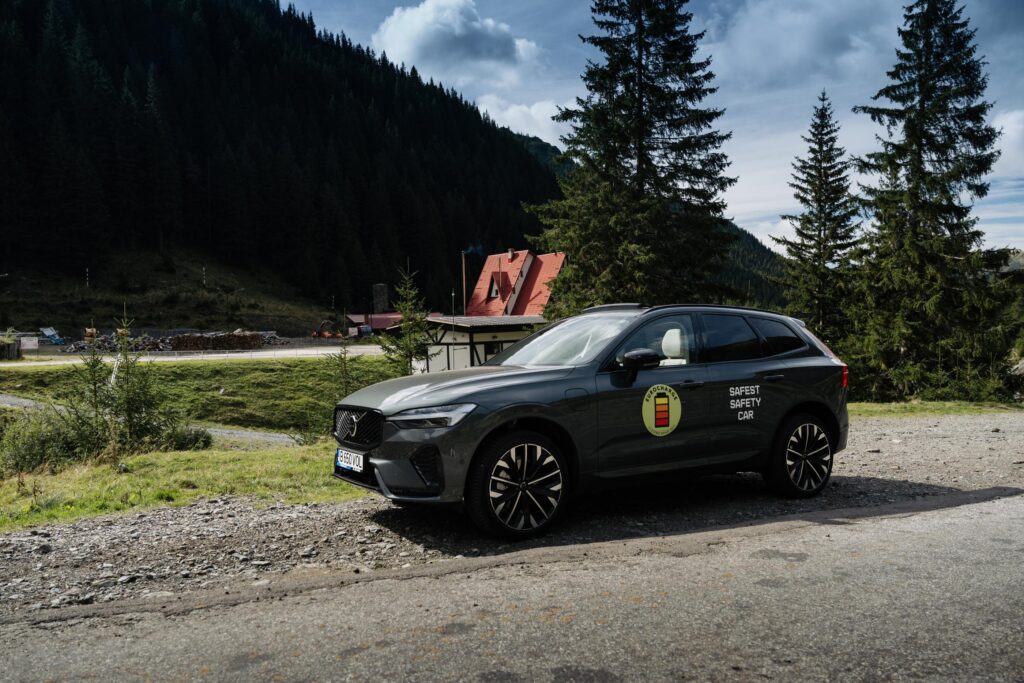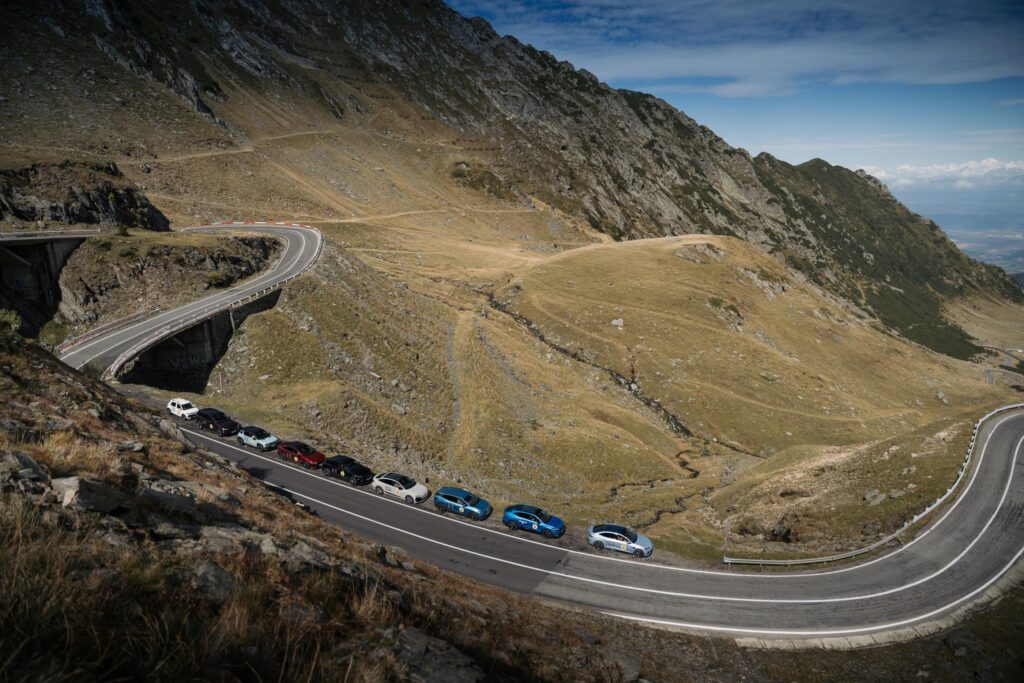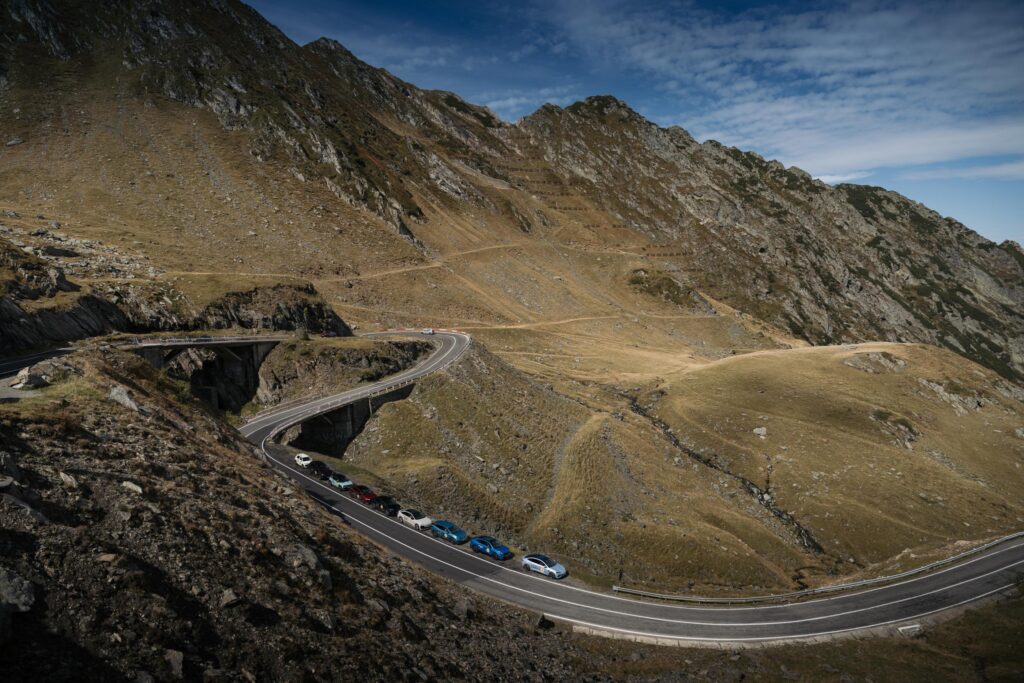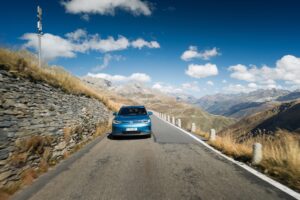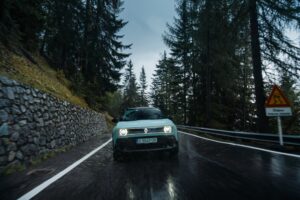Hmm, it smells a lot like fall (spoken in the voice of Fredrik Backman’s Ove). It’s the thought running through my numb synapses as my fingers twist in a mechanical motion. I take another breath of cold air as I remove my key from the front door.
September. Monday. This is nature’s way of telling us it’s time for a break. Just a brief respite to slow down the pace and control it. But before we get into full nostalgia mode and start looking for Halloween costumes and Christmas tree decorations, there’s one more thing to do: it’s called EUROCHARGE by Schaeffler, and this year, the electric tour is heading to the Alps.
I open the door, the navigation is already set on my smartphone, and the car asks me if I want to continue my route. We are 21 journalists and special guests, the starting point is somewhere near Pitesti, on an asphalt ramp that spills from the highway to the outskirts of the city.
Nature will leave a mark on this project. The Alps are about as fussy as a toddler just woken up from slumber by a playful cat’s meowing, but that rule applies to any mountain peaks that beg to be crossed once the calendar has entered the ninth month.
Home Sweet Home
But before we leave soft whispers on asphalt strips designed and built by the Austrians, Swiss and Italians, we decided that the first sip of this mountain adventure would be a familiar one. A local signature dish, famous across much of Europe, a sweet treat as cozy and fulfilling as fresh apple pie just out of the oven. I hope you’re not reading this on an empty stomach.
Let me circle back: the first major checkpoint of this test drive, workshop, mobile laboratory (call it what you will) was called Transfăgărășan. Five decades. That’s how much time passed since this road has been pouring its ribbons through forests, alpine hollows and vertical cliffs. And just as many since the motorized man began to cross it from one end to the other with clear purposes. For a while now, the Transfăgărășan has become a place of pilgrimage, a reason for a family vacation or simply an incentive to get in the car and drive away.

In our case, the reason was simple: to open this road trip dedicated to the Alpine passes with a local one. And the Transfăgărășan did not disappoint. You feel like you’ve swallowed your food whole when the entire fiber of the bodywork twists from the potholes, you want to close your eyes when you see phone numbers of local “businesses” on the rocks and sometimes you wish the license plate didn’t start with RO. But all of that passes and disappears into a drawer of frustration the moment you leave the last local produce kiosk in your rearview mirror, right next to the sign that says “Towards Bâlea Lac”.
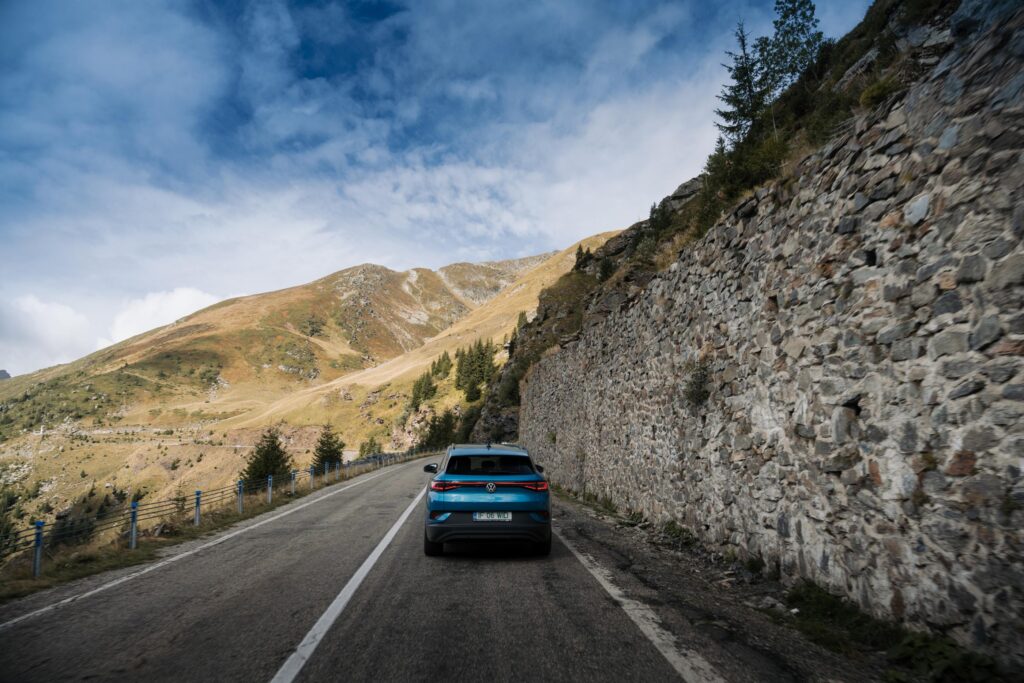
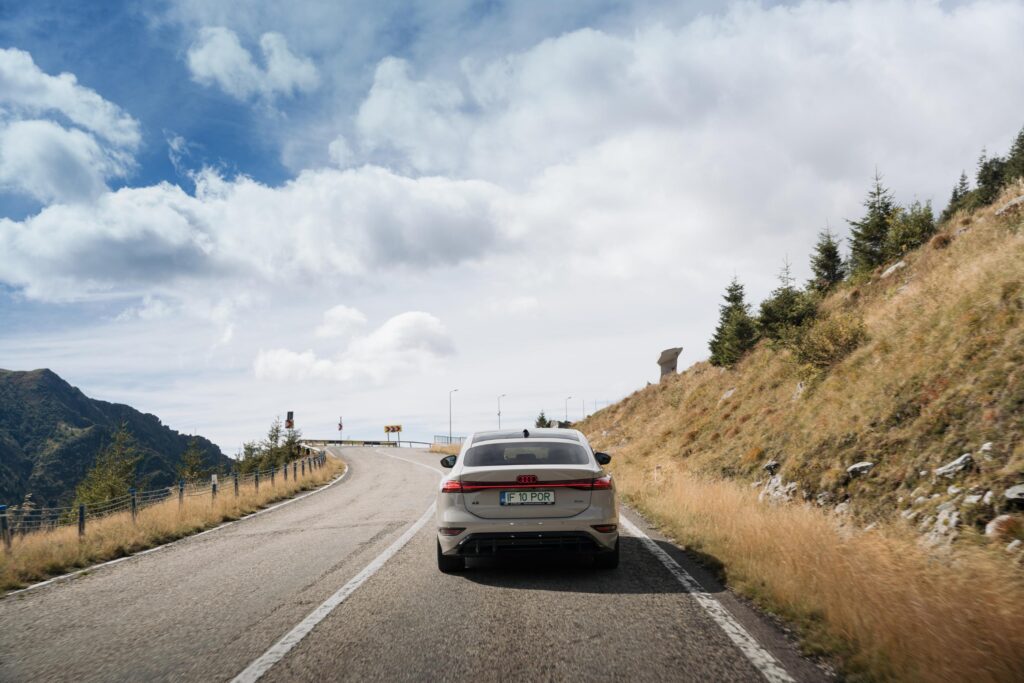
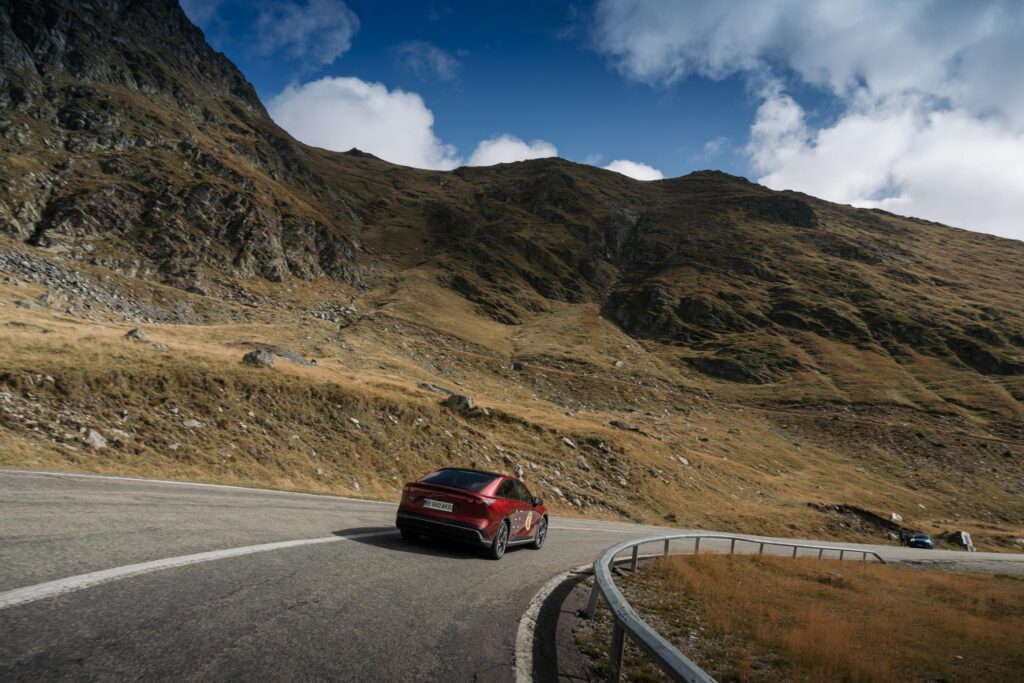
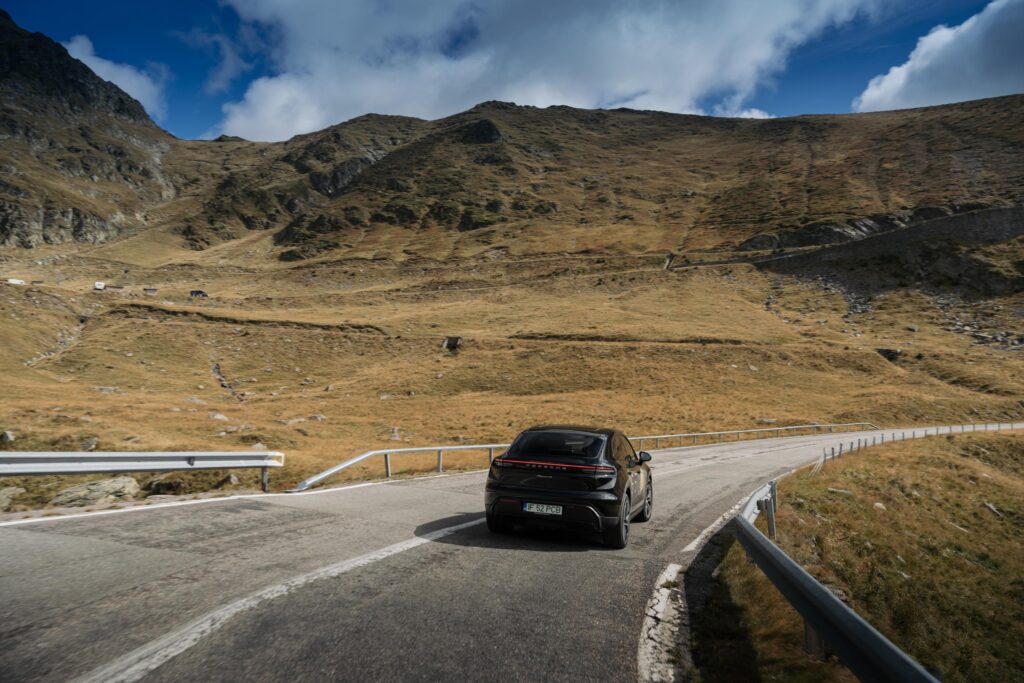
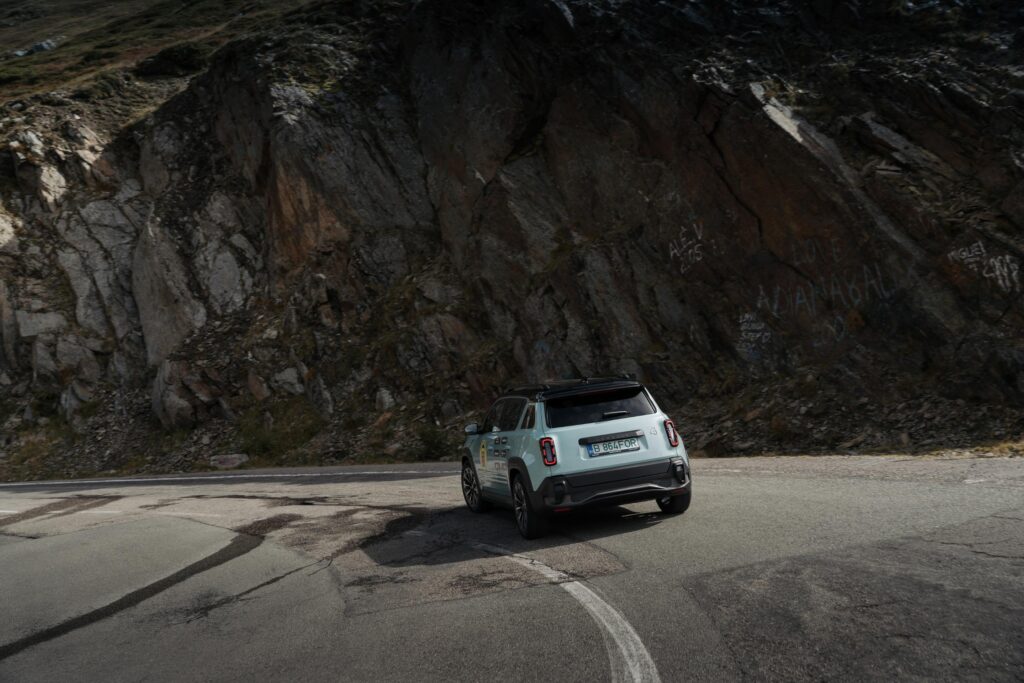
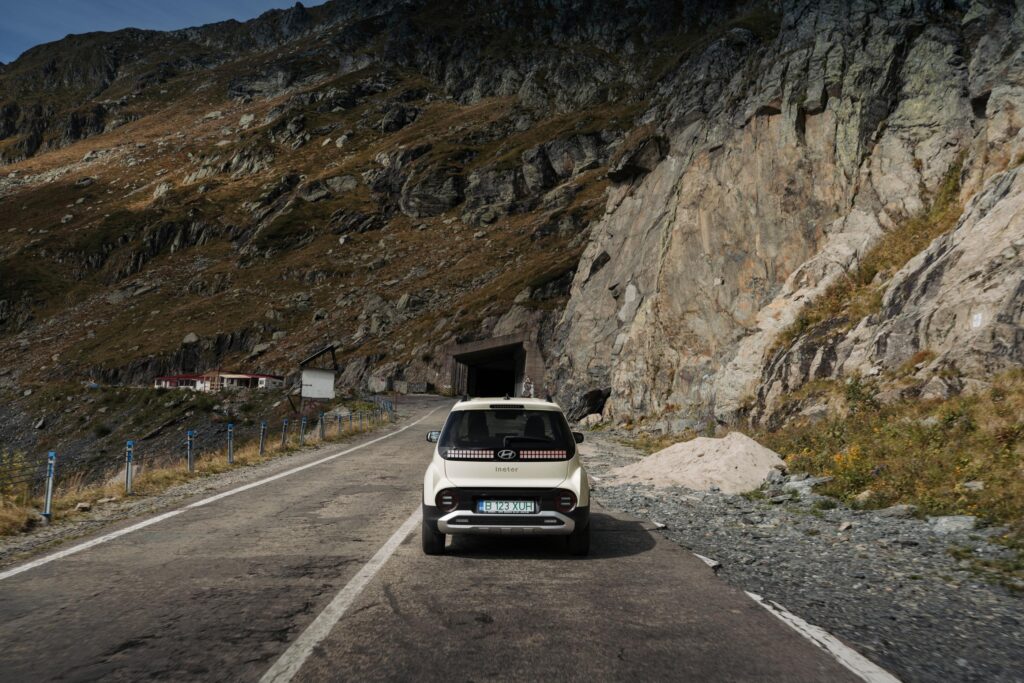
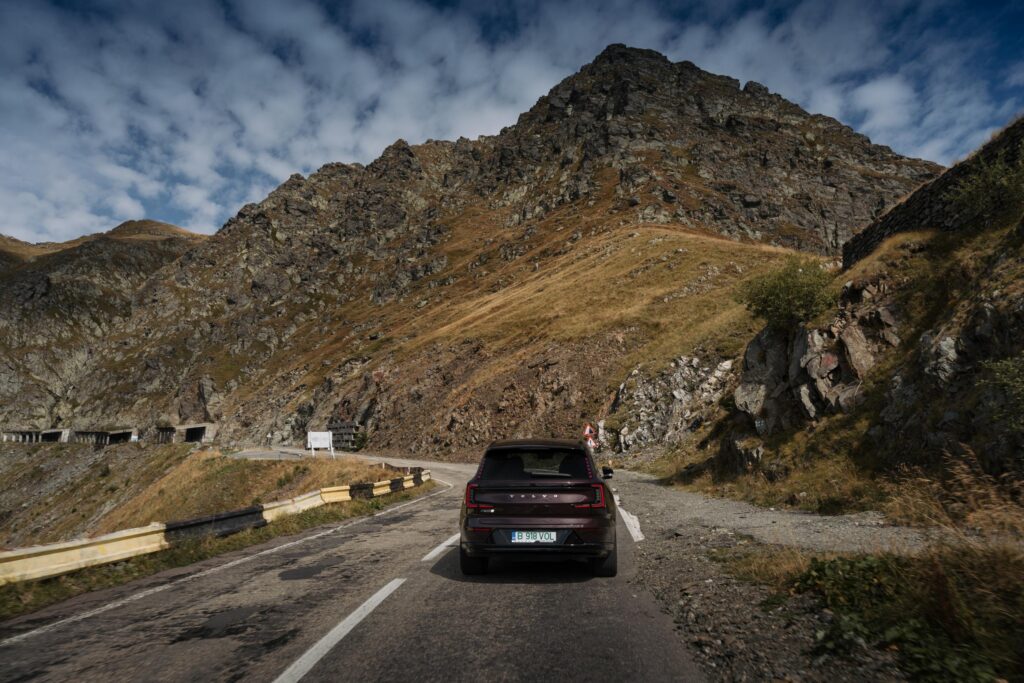

I don’t think we the need to talk about any superhuman effort, cold sweats or anything in that category. Every EV had a quiet ride surrounded by this little piece of Romania. Michelin’s all-season tires had no reason to show their duality, since the temperature at 2,000 meters was about 12-14 degrees Celsius. We’ll see how the CrossClimate 3 compound fares once we get up close and personal with the mighty Grossglockner.
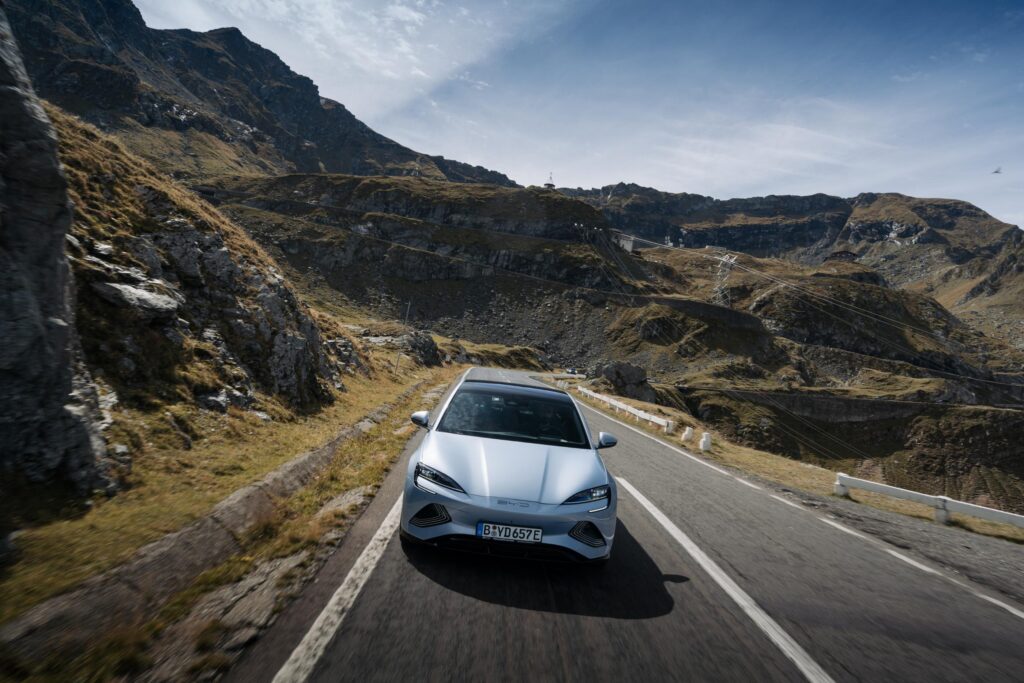
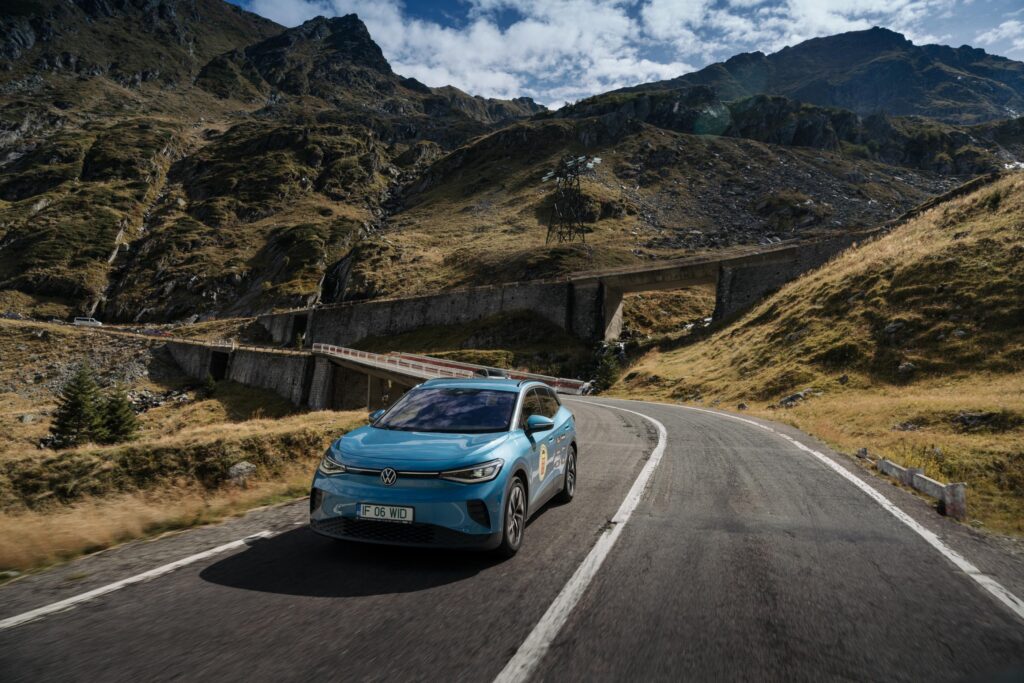
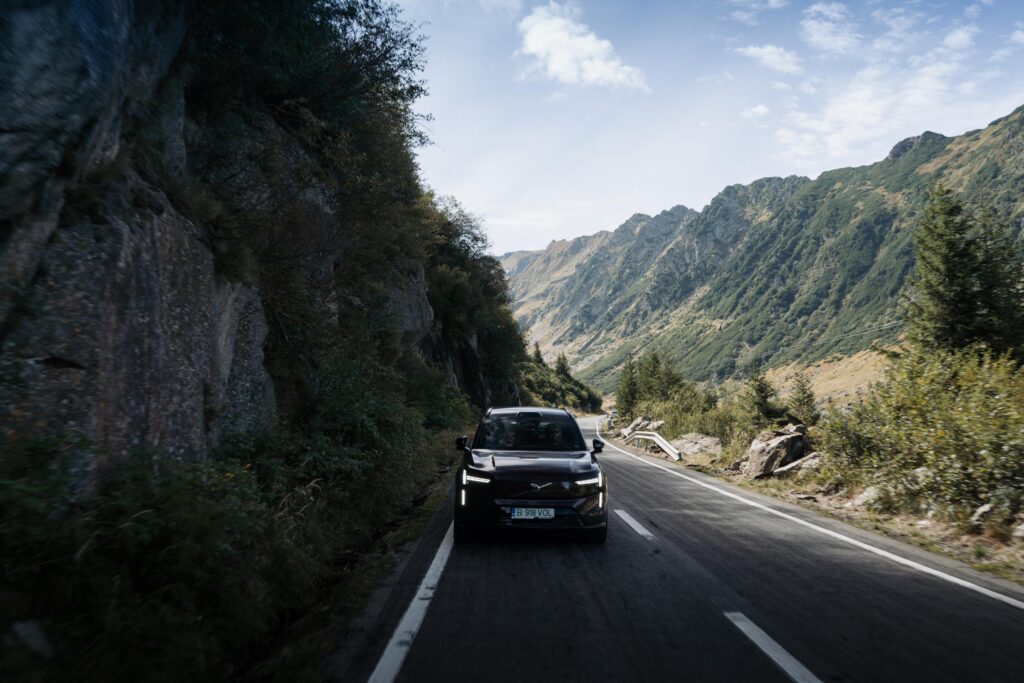
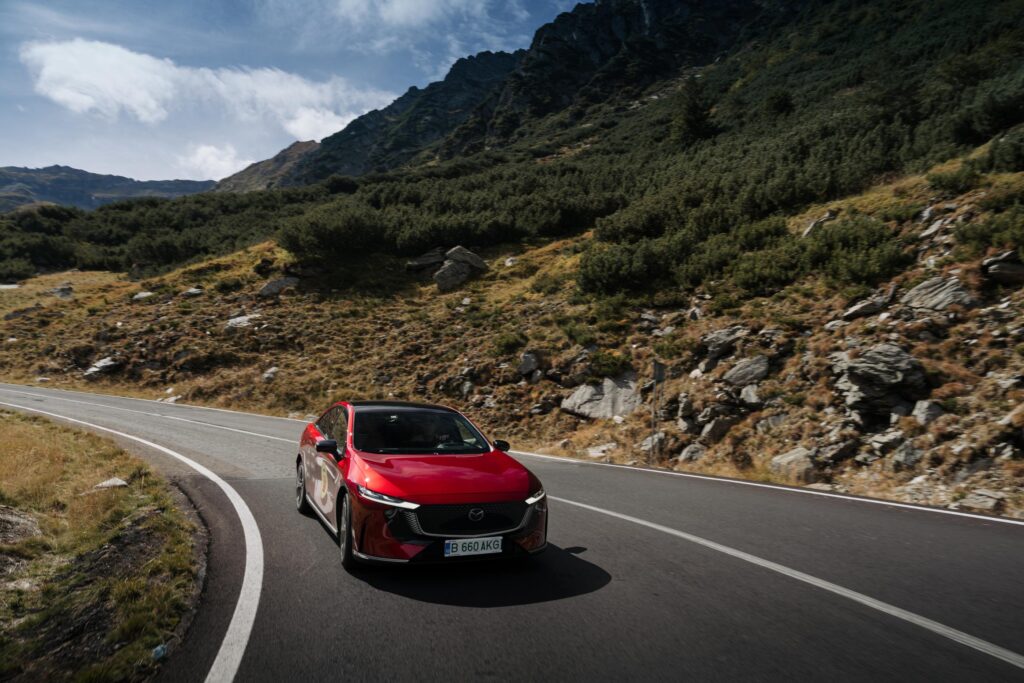
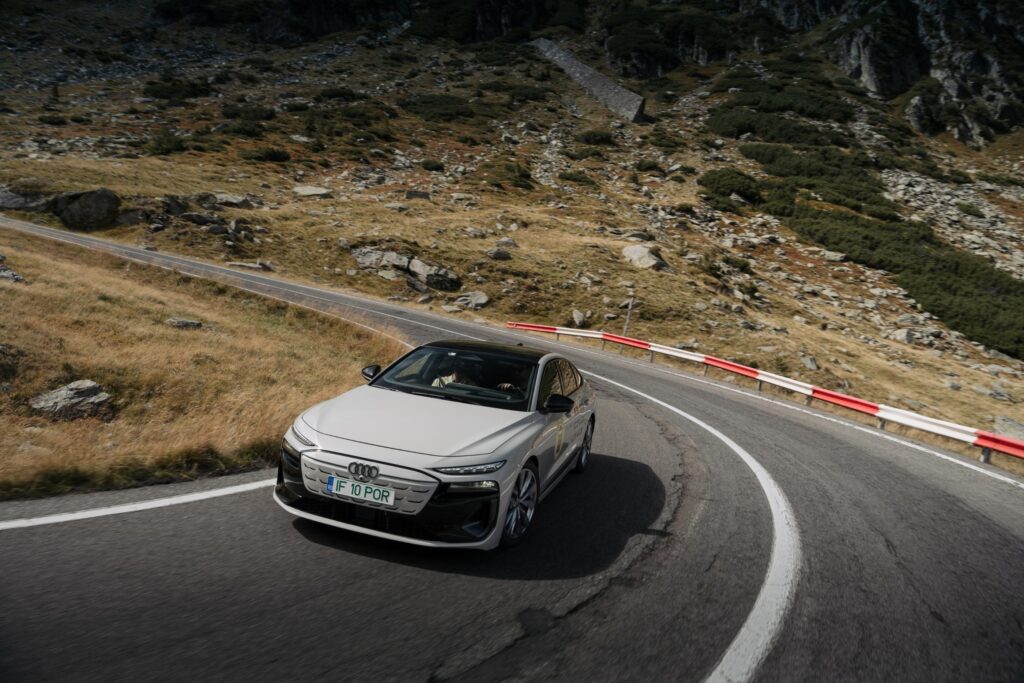
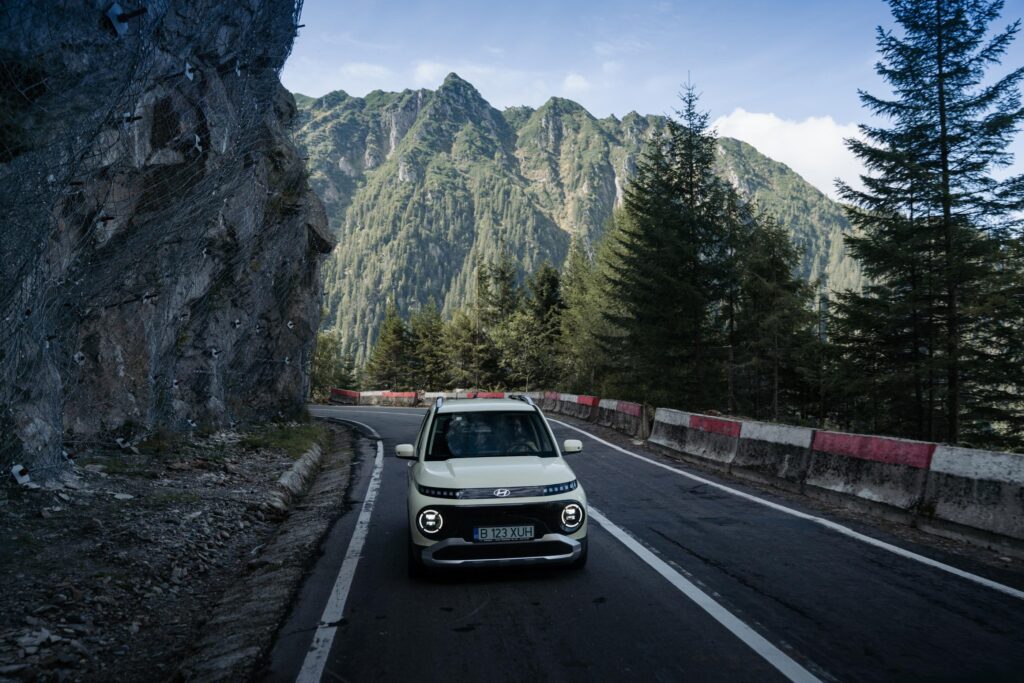
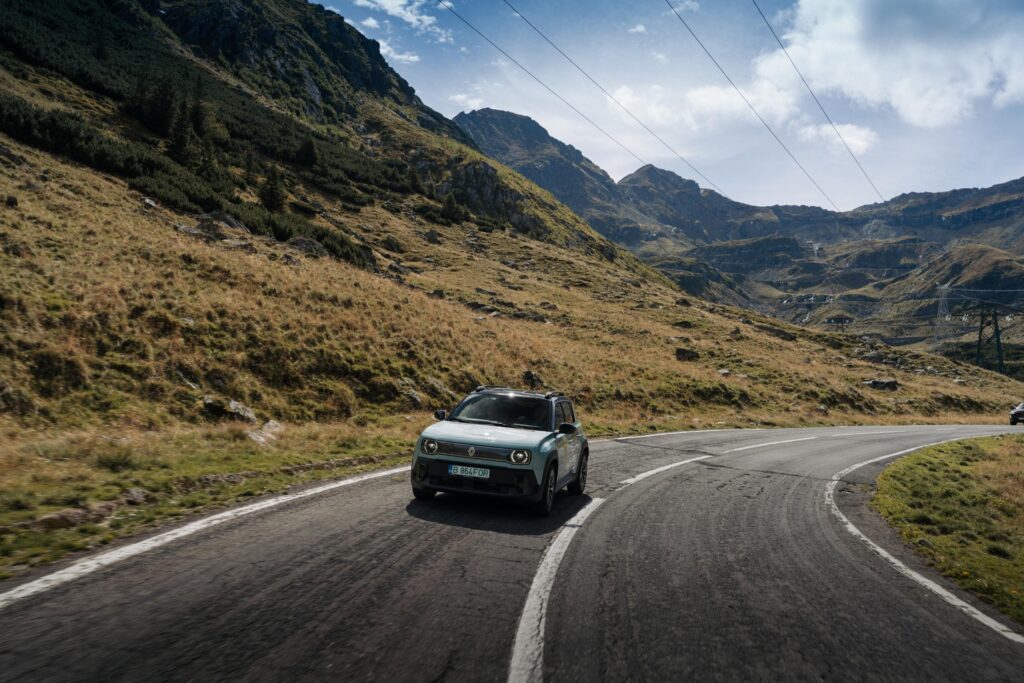
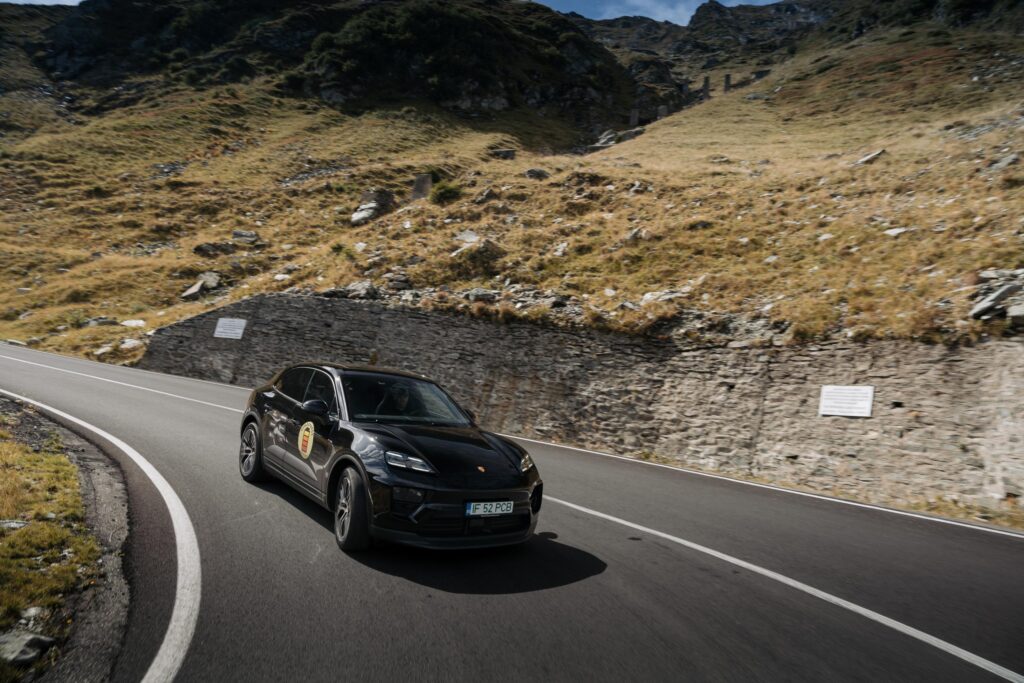
With that cold air still stuffed in our lungs, we looked towards the next checkpoint on the map.
Full House
A single “provider” for all that invovles charging. Well, yes, that would have been a challenge if I was writing this back in 2020. Today, the infrastructure looks completely different. In a positive way.
Case in point: a (fairly) recently inaugurated OMV petrol station in Mărginimea Sibiului. Eight charging points (out of more than 1,000 available in the app). Just as many were immediately brought to life the moment the EUROCHARGE caravan stopped for lunch.
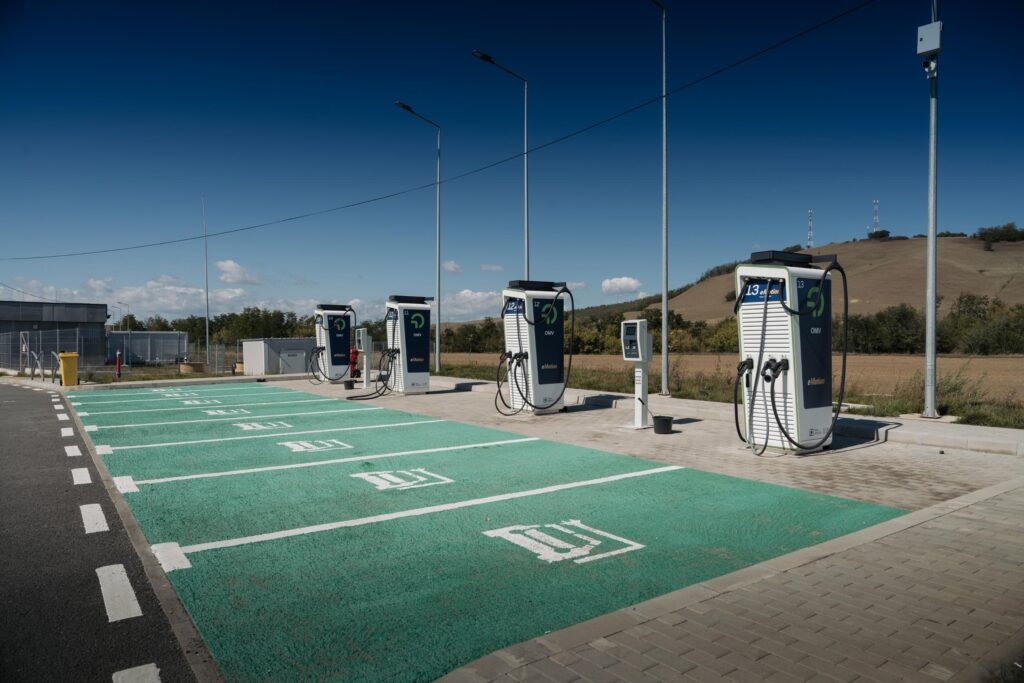
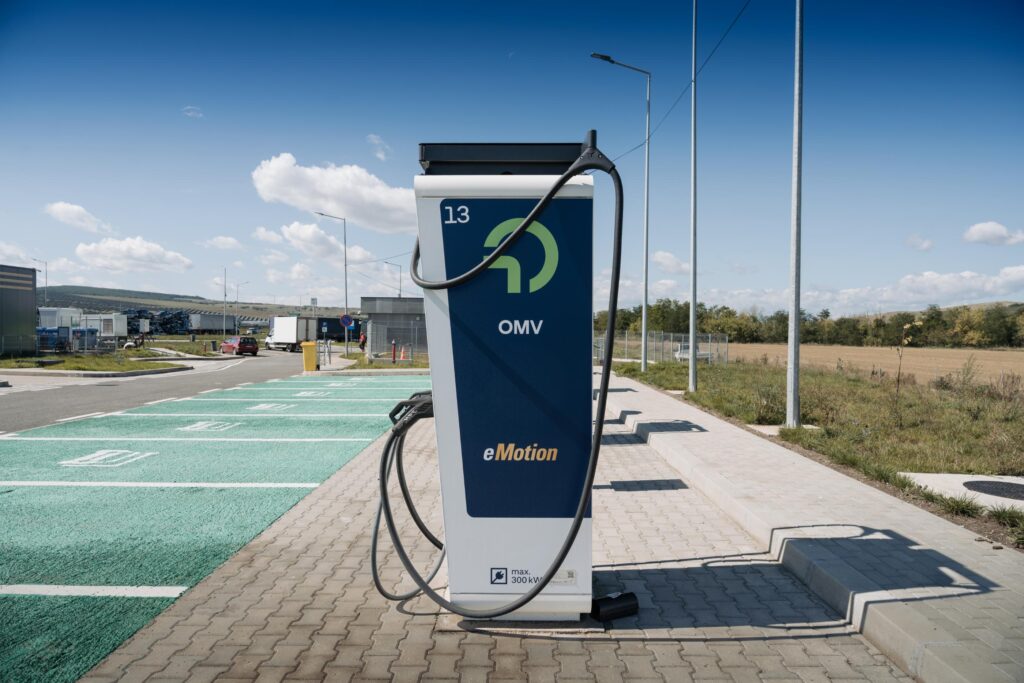
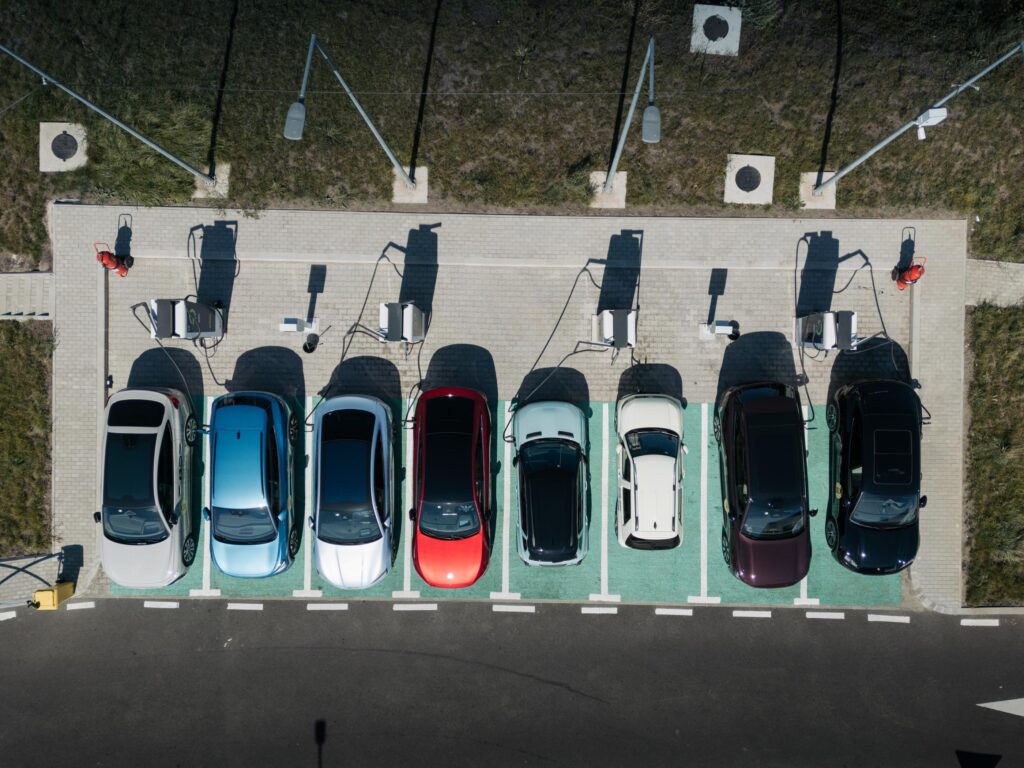
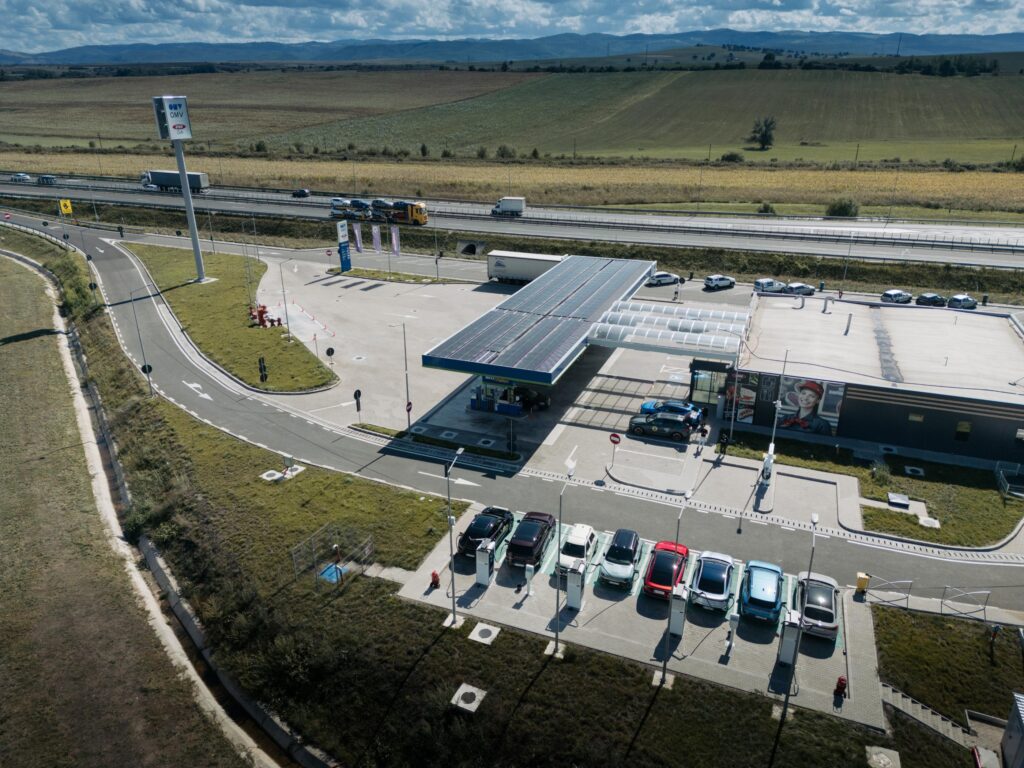
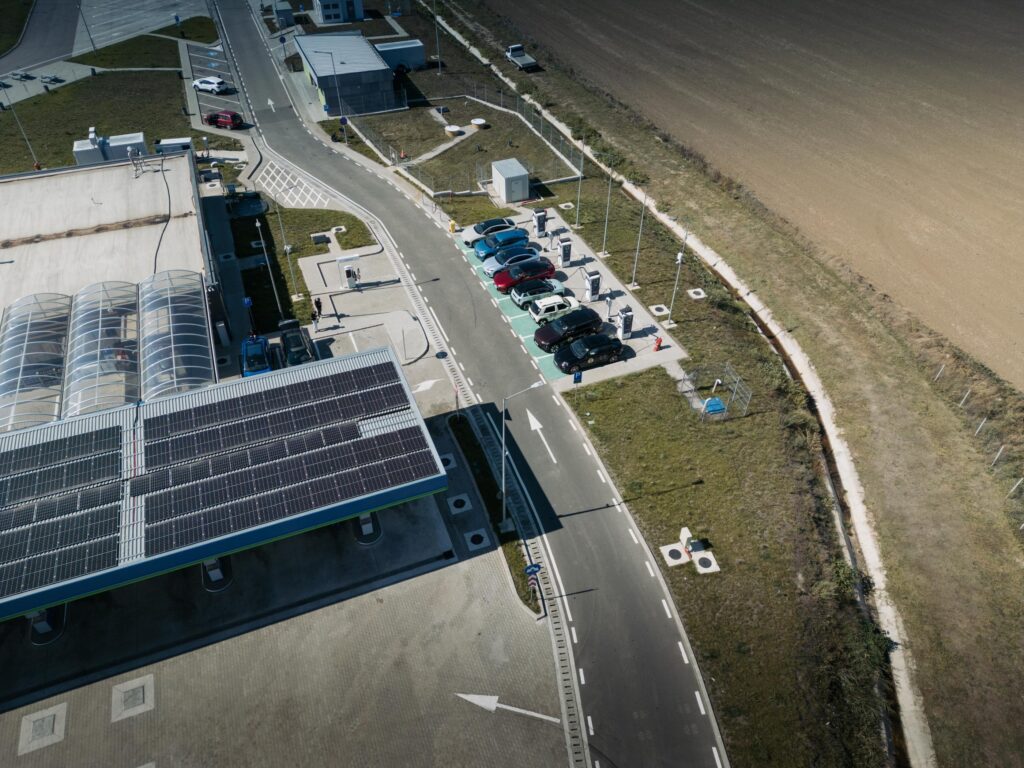
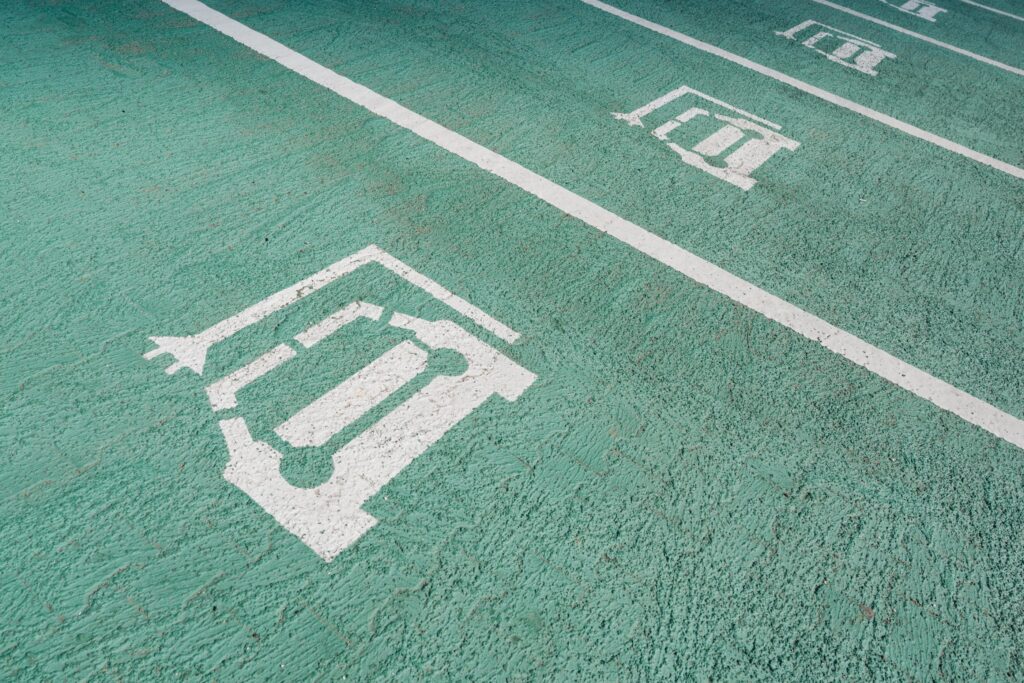

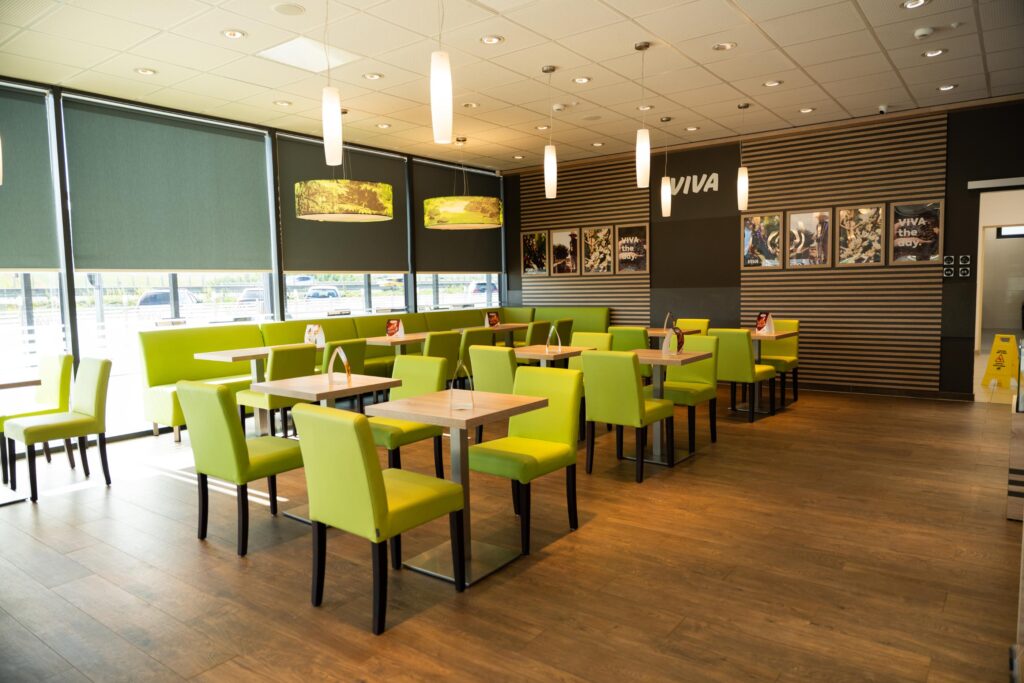
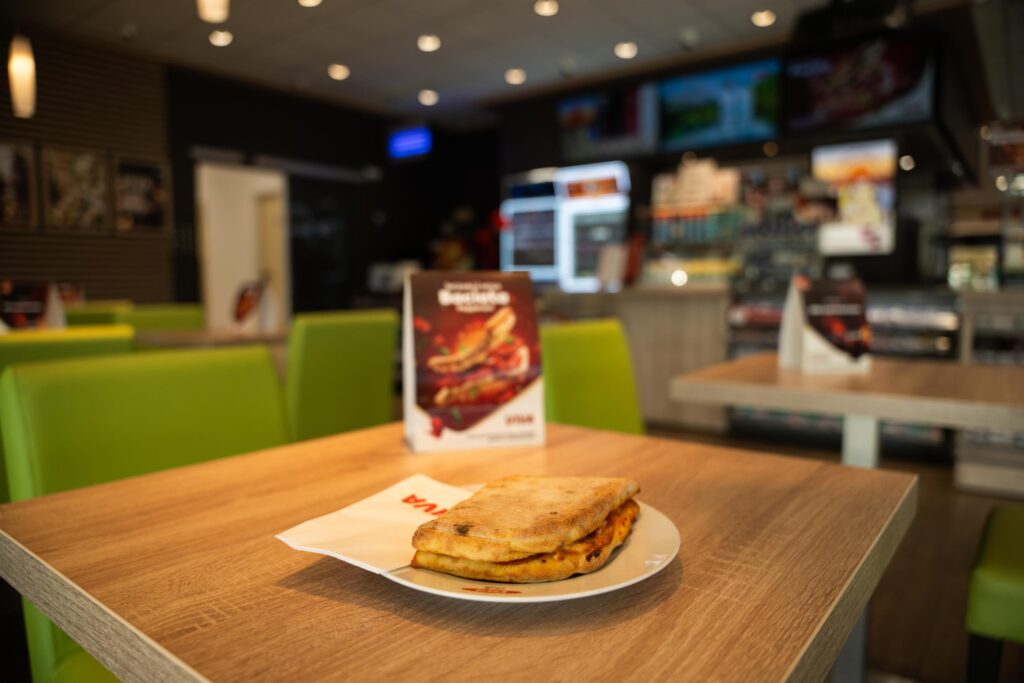
With our batteries fully charged and a little extra energy for all of us, we headed west.
In Arad, the caravan dispersed to different charging points discovered via the OMV eMotion app, and from there, we headed to the designated dinner place, a Hungarian restaurant in the Kecskemét area.
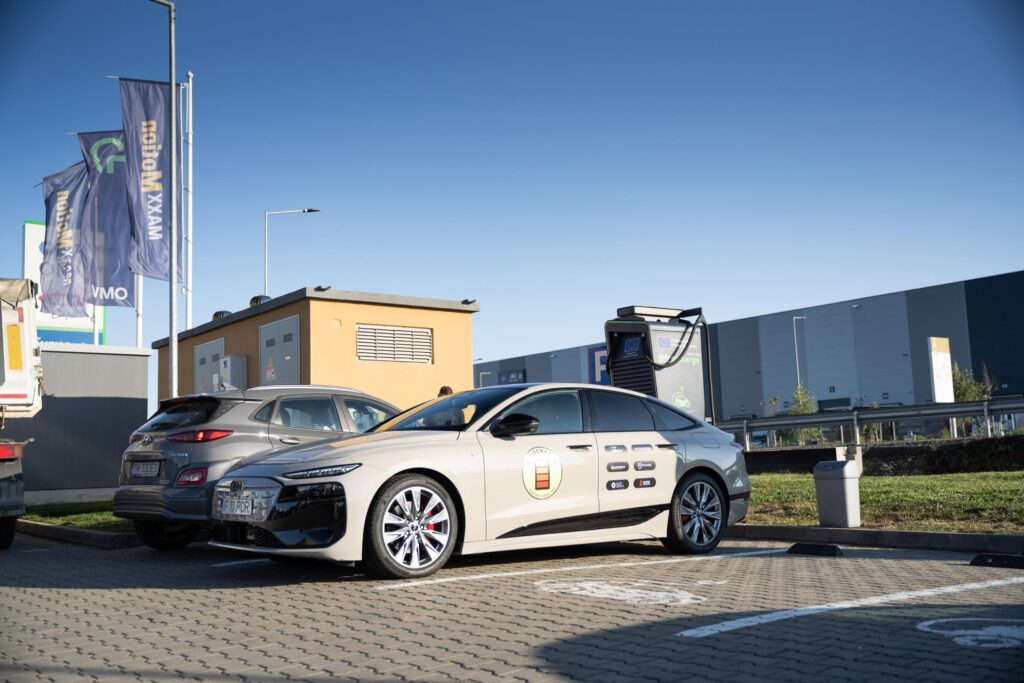
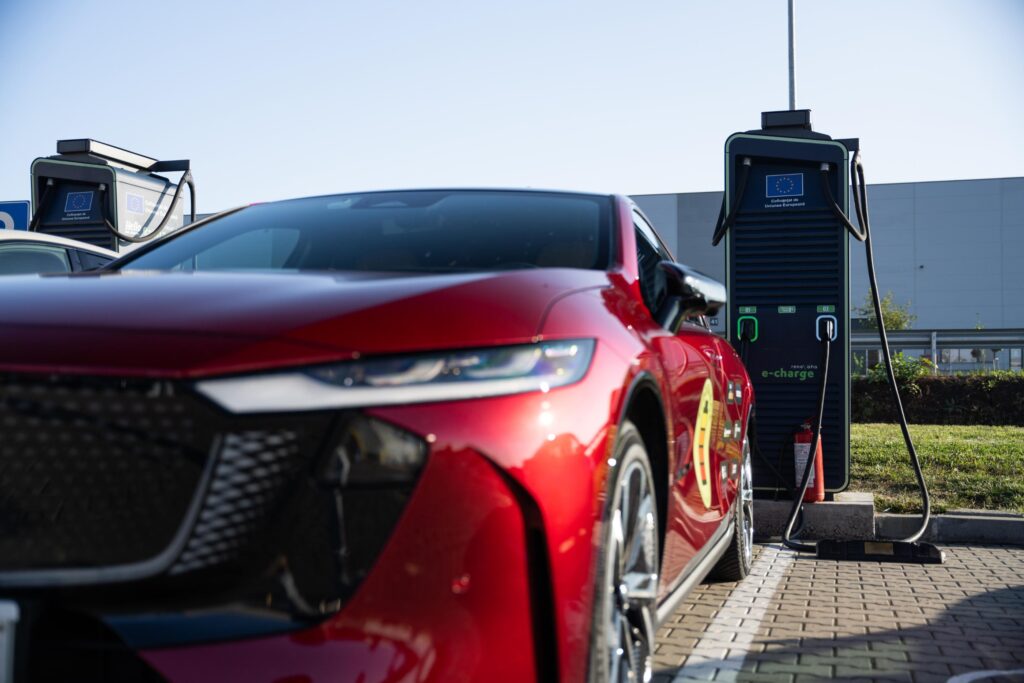
The evening brought us all in the parking lot of a hotel in Inárcs. We put the numbers together (which we also updated according to the evening’s upload), debated on the topic at hand and did a Save & Exit in Excel. It was a good day for science.
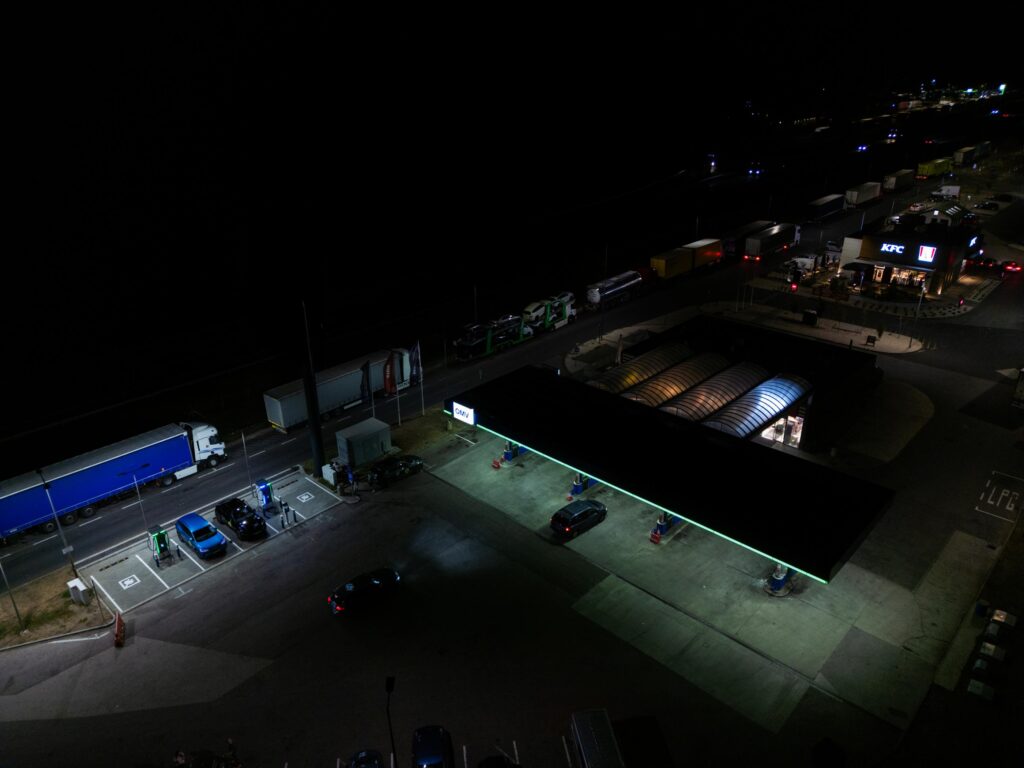

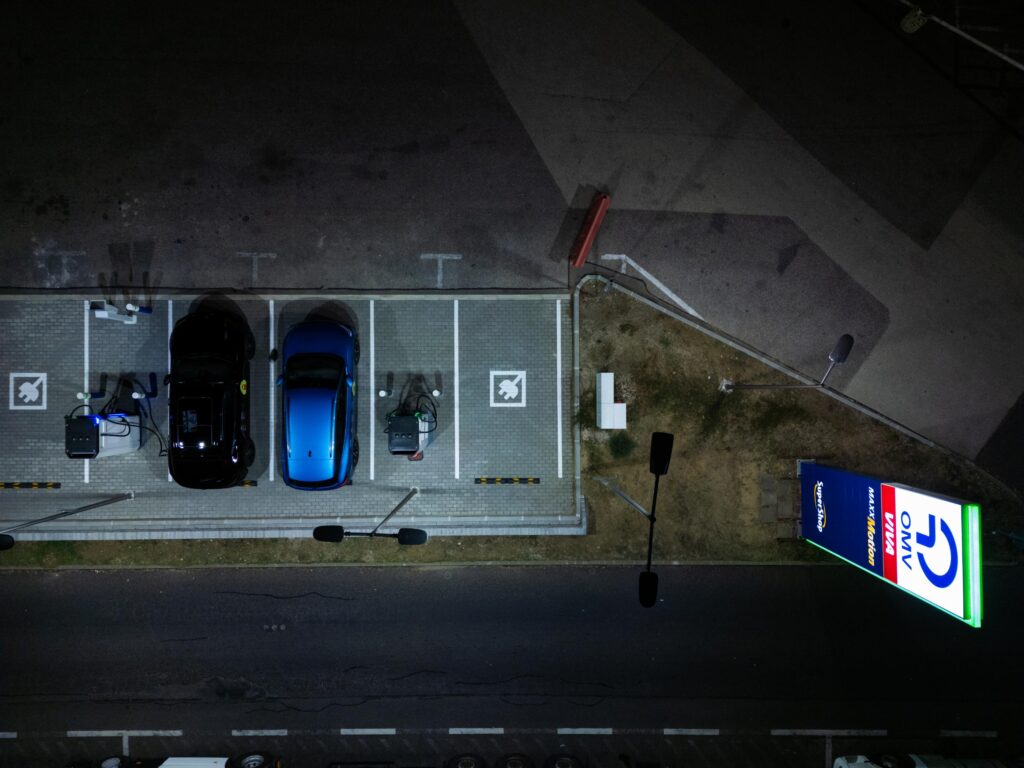



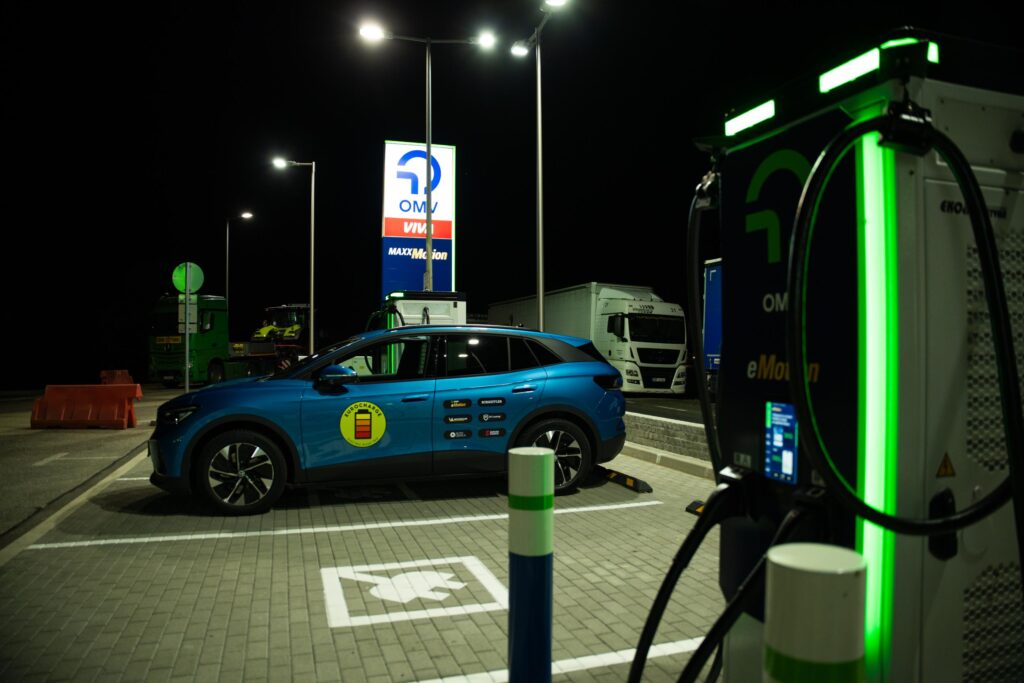
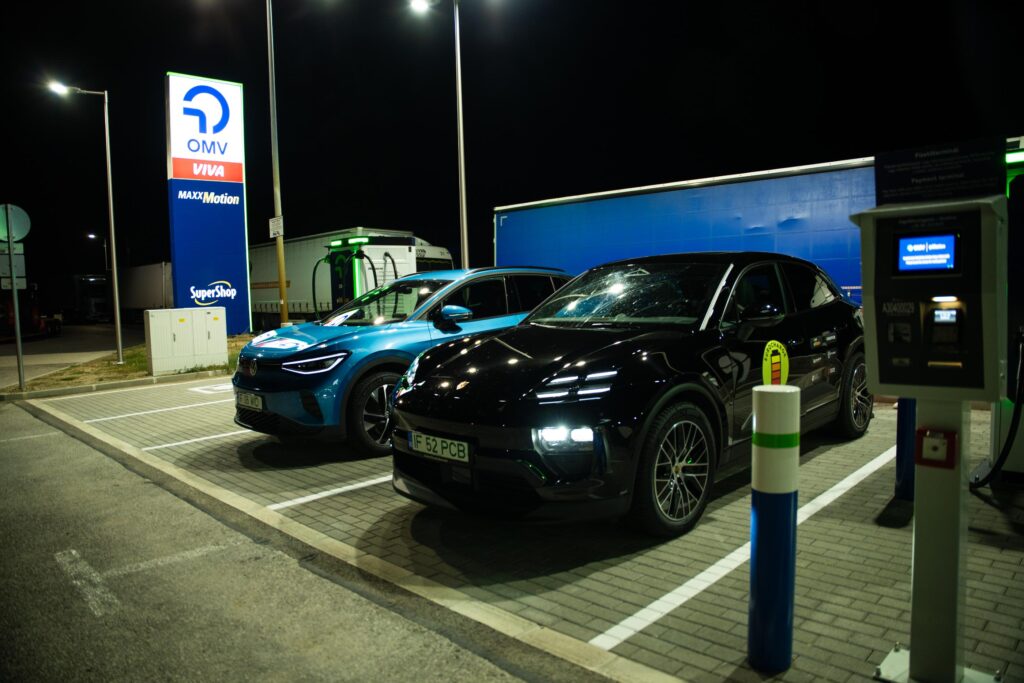

Now it’s time to leave you in the company of my tour companions and the impressions they have gathered along the 700 kilometers covered today. I’m going to check the weather.
Alin Ionescu (Mașinistul) on the Audi A6 Sportback e-tron
Starting your journey in the Audi A6 Sportback e-tron quattro is both a curse and a blessing. Because the bar has just been raised high, right from day one. And we have 11 days and seven more cars to test drive, for which I need to recalibrate my expectations.
It was a long day, starting in Bucharest, crossing the Transfăgărășan, stopping for photos, then again to charge the cars, meals and logistical discussions in several OMV stations along the way. After 732 kilometers, we camped near Budapest. With this Audi, which costs over 100.000 euro, it didn’t seem like an effort. Or at least, not a bigger one than with any other car in the world – regardless of segment, powertrain type or price class. That’s how evolved the new A6 e-tron is.
Developed on the PPE platform, (which made its debut on the Q6 e-tron, as well as the Porsche Macan, which I’ll be meeting one of these days), the A6 has an 800V electric architecture, allowing it to charge with up to 270 kW of power. So even with a generous 94.9-kWh battery, charging times are short. Specifically, in all the stops today (three of them), I don’t think I’ve accumulated an hour of actual charging. Thanks to an aerodynamic coefficient of just 0.21, the A6 e-tron manages to get very good fuel economy even at highway speeds, allowing real-world ranges of over 400 km.
In addition, being a limousine (albeit of the hatchback variety) engineered by Audi, the assistance systems are highly evolved and work impeccably. On the highway (and beyond), the A6 e-tron drives semi-autonomously and provides a wealth of information via the augmented reality head-up display. Ride comfort is also impressive, as the model we tested is equipped with air suspension, while good soundproofing and exceptional aerodynamics make rolling noise extremely low. And then there’s the 462 HP of this quattro version, which make this 2.3-ton barge accelerate explosively with a harder push on the accelerator pedal. However, any electric, even the most affordable, feels fast. Yet there are other details that make the difference for this premium German sedan.
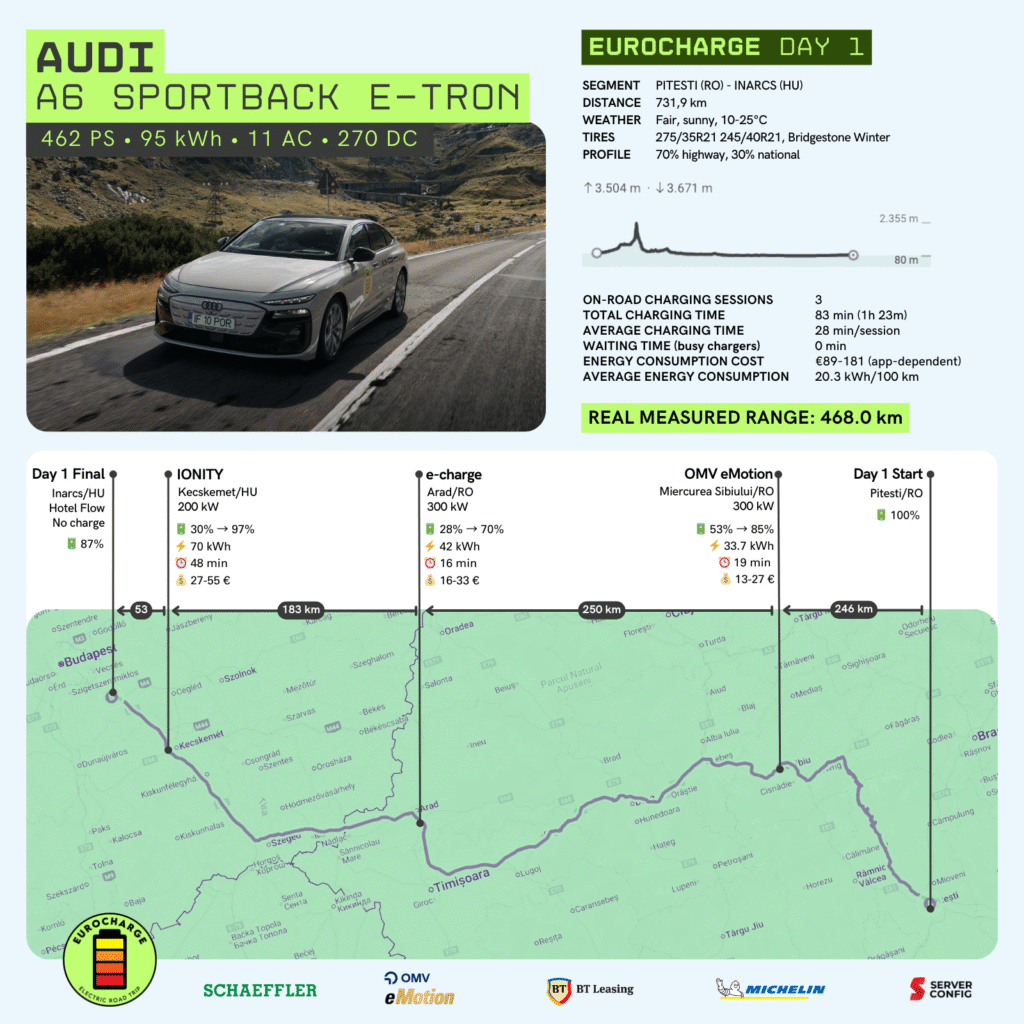
Radu Hângănuț (Euronews Romania) on the BYD Seal
Usually, when you read about the concepts that drive automotive engineers in their quests translated into new models from God knows what brand, you hear about abstract philosophies. Once you meet this car up close, you usually can’t find the said philosophy and, in some cases, not even the tiny space you need to reach to turn on the headlights.
But in BYD’s Seal, I saw it. The philosophy. It’s called “Ocean Aesthetics” and I discovered it before I knew about it, when I was washing the car. The water flows in a remarkable way down the front of the car, and I think that’s wonderful. That a man actually designed the bodywork of this car with the sea in mind, and with the hope that someone might see the ocean waves as they try to get the last traces of pink whipped cream off the bonnet – that alone is something worth drawing as a specialist and experiencing as a driver.
But the BYD Seal has many other positives. The interior is very friendly. It fiddles if you want it to, but gets the job done when you need it to. The center screen rotates from landscape to portrait mode, for example. It’s a nice little thing, not necessarily helpful, but it steals your eyes and offers a conversation starter in case you don’t have anything to talk about with the passenger. It also comes with mats that can be adapted to the season in a very analogue way: you have the standard, plastic ones for wet seasons, while in summer you simply drag a piece of fabric over them. And then you repeat the process.
Seal takes the best of what you see from the competition and eventually composes a package that catches your eye at first, and then persuades you on the logic component. If you want sports-car performance, you get it. Just think of what the “3.8S” on the trunk lid might spell, to get a better understanding.
Also in the “what’s inside” department, we also noted the Dynaudio Performance, 12-speaker audio system that takes Nipsey Hussle’s music to a new level of godliness. Less good parts? Interaction with the multimedia system via voice commands is a bit shaky and frustrating at times. Also, the lack of a one-pedal-drive feature may be something you’ll wonder about when you’ve got a lot of trips around town.
On the plus side, the Seal has the most horsepower (530) of our caravan. Take that information and keep it close by for when you have to justify energy consumption. We got almost 23 kWh/100 km, with the caveat that we drove it on a 700+ km segment, made of almost 80% highways. So come back here in 11 days, when we have all the figures. Not all the judges have ruled.
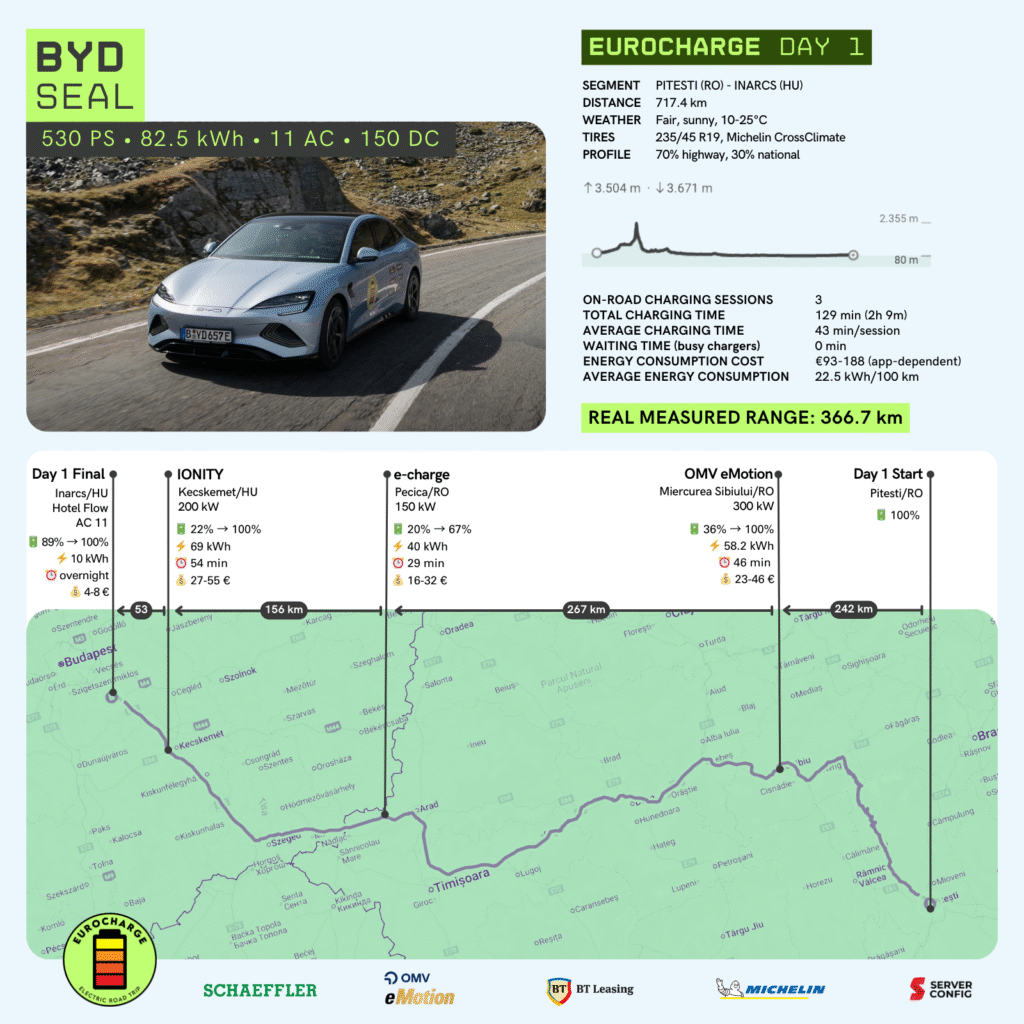
Dragoș Baltățeanu (Autocritica, Auto Test) on the Hyundai Inster
The smallest model in EUROCHARGE by Schaeffler 2025 is the Hyundai Inster. Although it’s basically a city car, the Inster has proven itself to be a complete automobile today. It can run without any problems at highway speeds, and its energy consumption has remained within decent limits (around 18 kWh/100 km).
Depending on driving pace, range revolves around the 300-kilometer mark. The Inster kept up the pace at 130 km/h with no issues, and the car’s stability is impressive, especially since the suspension is tuned for comfort. The only minus would be that the front seats are too narrow.
Despite its small exterior dimensions, the Inster feels like a higher-class car inside thanks to the tall roof. There’s plenty of storage space, and the two rear sliding seats are a great idea. You can free up luggage space or legroom for passengers as needed.
The Inster has a tall silhouette reminiscent of the Hyundai i10 (produced between 2008 and 2015), and the design is inspired by the brand’s current styling with an emphasis on oversized, pixelated turn signals and taillights. The small EV from South Korea doesn’t use the e-GMP 800 V architecture of its bigger siblings in the Ioniq family, but has instead been developed on the K1 BEV platform.
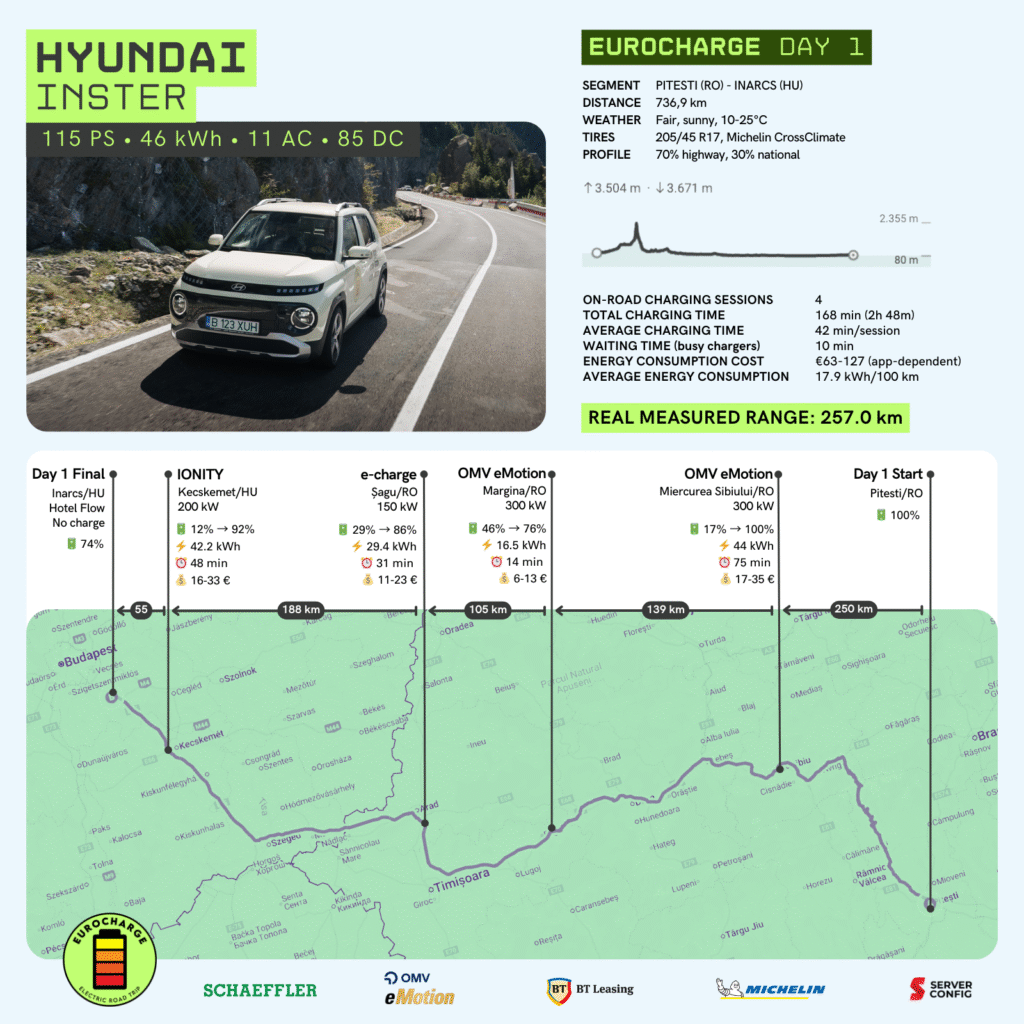
Constantin Ciobanu (Autocritica, Adevărul Auto) on the Mazda 6e
What if the Mazda6 was rear-wheel drive? For me, it has long been something on the border between curiosity and desire. But it’s happened, now that we’re talking about the Mazda 6e.
First of all I appreciate the fact that you have no difficulty in identifying the new model as a Mazda 6, even with that “e” attached. Then I appreciate the restraint, something that has long characterized the Japanese manufacturer. It would be easy to offer much more, but 258 HP and 320 Nm were enough for me today, even on the Transfăgărășan.
Until a hypothetical ‘MX-5e’, this 6e offers a slightly different recipe. First of all, we’re talking rear-wheel drive, and the fact that the front axle is relieved of the task of sending power to the ground is noticeable. The car is much smoother in the corners, much more relaxed, even though it weighs 2,000 kg. Now, the Michelin CrossClimate 3 Sport tires may well have helped build that feedback. If you opt for the first regenerative braking level, one that somewhat mimics the engine braking of a naturally aspirated engine, you’ll find that this helps the rear end follow the front axle much more fluidly. The car pivots naturally in corners. I loved the throttle pedal, as you can very easily maintain a constant speed without suffering from the on/off switch syndrome.
The suspension has two things going for it: it manages to make the car feel about 300 kg lighter, and it makes sure you enjoy a comfortable ride.
Extra points for the extremely well soundproofed interior, allowing you to enjoy the Sony audio system. Did I mention the interior? Very stylish and spacious.
I didn’t get along so well with the lane-keeping system. Way too stubborn, down to the level of conflict when it comes to what it wants versus what you want. A bit tiresome this battle. I haven’t figured out how to disable it, because I’ve done so with other systems that were quite annoying. For example, the voice assistant can be set to wake to life on the first syllable it hears. Even if you’re talking on the phone, it will still want to fulfill a wish.
All it all, at the end of the day the dashboard showed an average consumption of 19.6 kWh/100 km. A good value for a highway run under temperatures in the 14-16 degrees Celsius range.
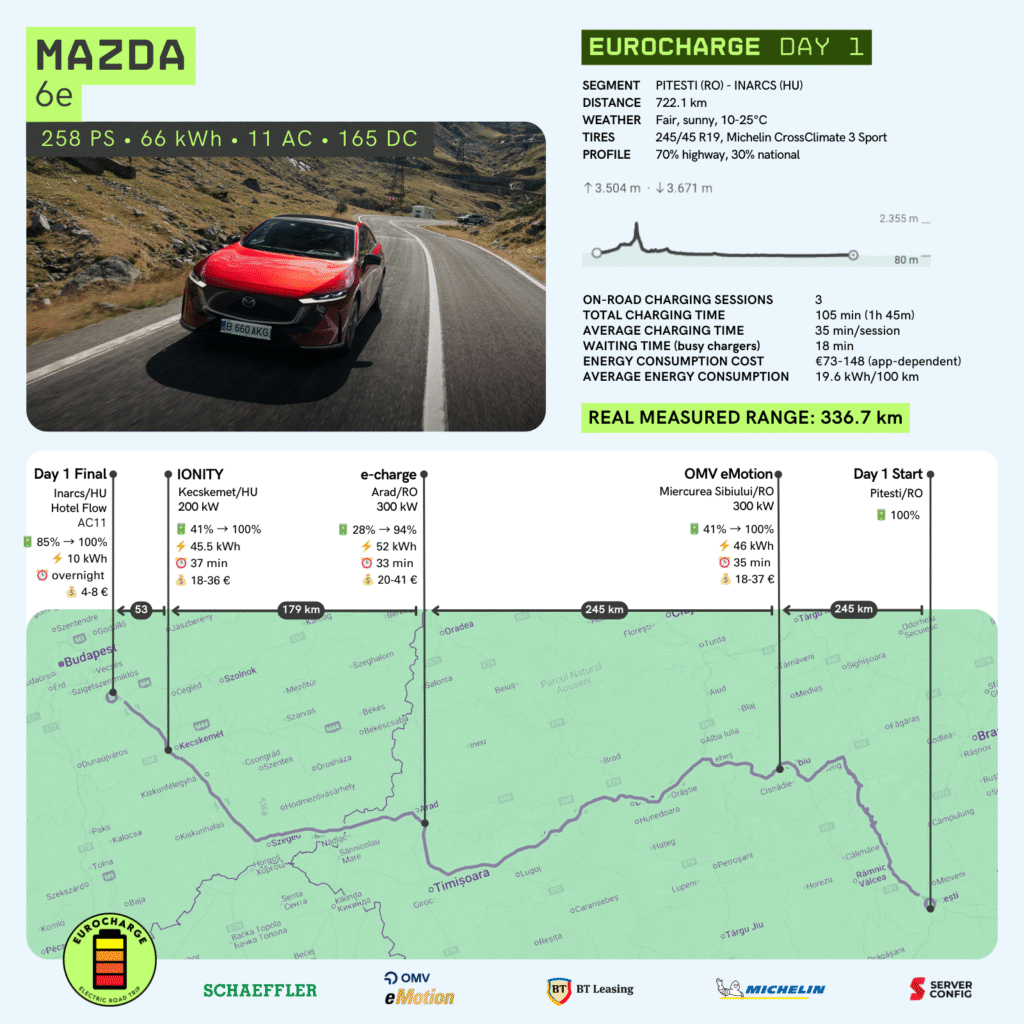
Mihai Vasilescu (Digital storyteller) on the Porsche Macan
The first car I drove was a Porsche Macan 4, so I wondered what that “4” meant. It’s just that sometimes, without realizing it, I ask myself these existential questions out loud. And that’s how I found out where it came from.
Naive as I was, I was convinced that this was more than likely the fourth generation Macan, hence the number. But no, “4” comes from the fact that it’s, as in power goes to all four wheels.
Well, whatever, it could have been a Macan 4S, which would have meant an extra 100 or so horsepower. Or it could’ve been a Macan Turbo, which would’ve meant an extra 200-something horsepower.
However, I had to make do with the 408 horsepower of an ordinary Macan 4. Very bad, I can tell you. I’m joking, of course, it’s got enough horsepower to lend some to others in need.
But beyond the power, this Porsche Macan 4 also manages to feel elegant. In the sense that, although you feel its power with every press of the pedal, it’s a different kind of driving, like a calm gentleman on the verge of a temper tantrum.
Behind the wheel of the Macan, there’s a kind of inner peace and tranquillity that makes you drive it in a serene, peaceful way, but fully aware that, after all, you can release the 400 horsepower at your disposal just by pressing the accelerator. The perfect combination, right?
As for the rest, to give you the figures that interest many people when we talk about EVs, the car can charge with up to 270 kW, which means you can charge it from 10 to 80% in under 25 minutes. And that’s with a 95-kWh battery.
And fuel consumption is simply decent, given its size, weight and twin motors.
We arrived from Bucharest to Budapest with an average consumption of 22.3 kW/100 km, and we only charged twice on the way, once in Miercurea Sibiului and the second time in Szeged. A total of 55 minutes, but in Miercurea de Sibiu we stayed longer, and we also ate.
As for the rest, there’s not much more to say. It’s a Porsche and I think I’ve said everything.
Oh, no, to be perfectly honest, there is one thing that visually bothers me about the Macan 4: the glossy plastic used inside. Personally, I have a big problem with this shiny plastic, because it gets scratched, dirty and full of fingerprints very quickly. But I say this, of course, as a citizen who will never have the money to buy a Porsche and who doesn’t really wash the inside of his car.
I guess if you can afford a Porsche, you can pay the guys at the car wash to make your dashboard look like brand new, shiny plastic and all.
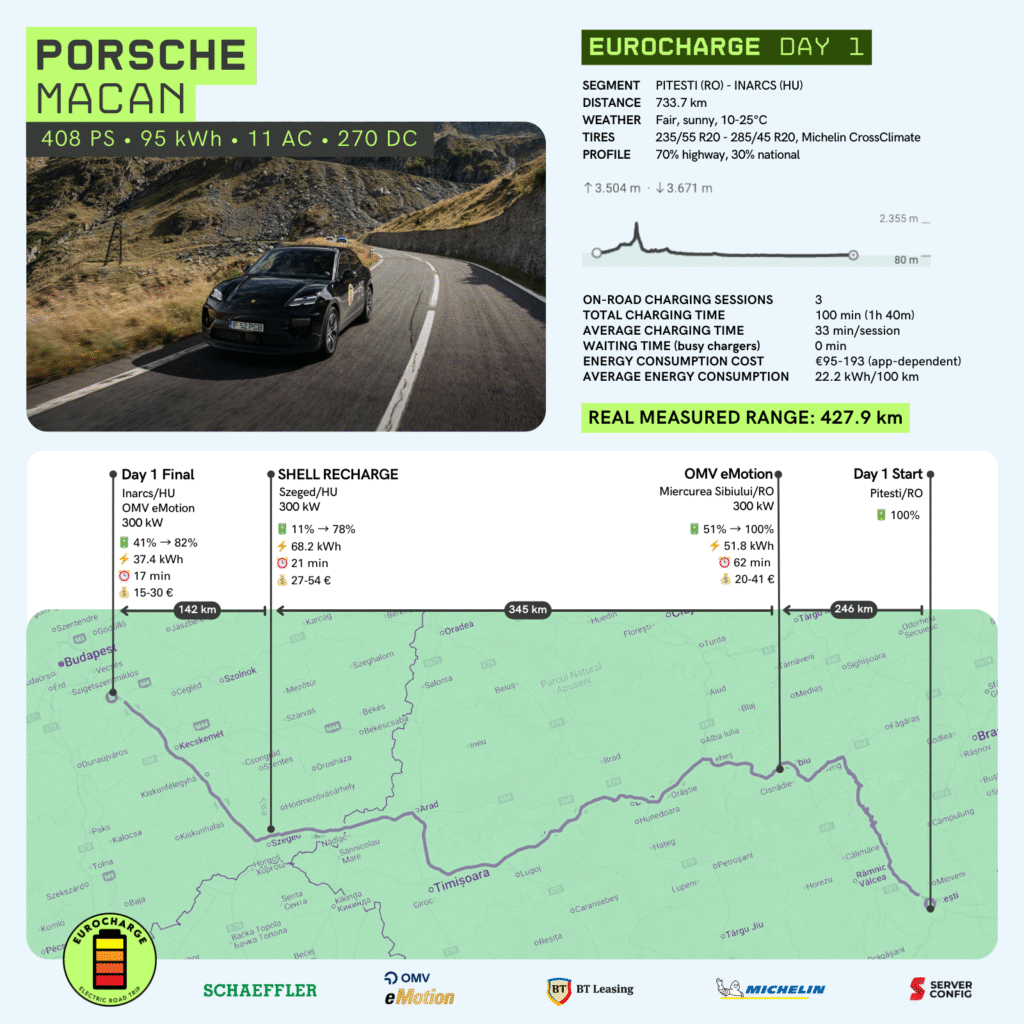
Marco Badea (Explicativ.com) on the Renault 4 E-Tech Electric
I drove the Renault 4 from Bucharest halfway up the Transfăgărășan. It’s a car I befriended because it doesn’t betray you. It delivers exactly what it promises. I got good figures, especially as the regenerative braking worked very well on the downhill (the battery’s energy levels went from 45% to 50%).
The car held up well on long stretches, despite being designed more as a city car. In other words, the French from Renault didn’t let me down this time either. It offers real range, on-road stability, power and comfort.
The Renault 4 is an honest electric. I think that would be an appropriate description.
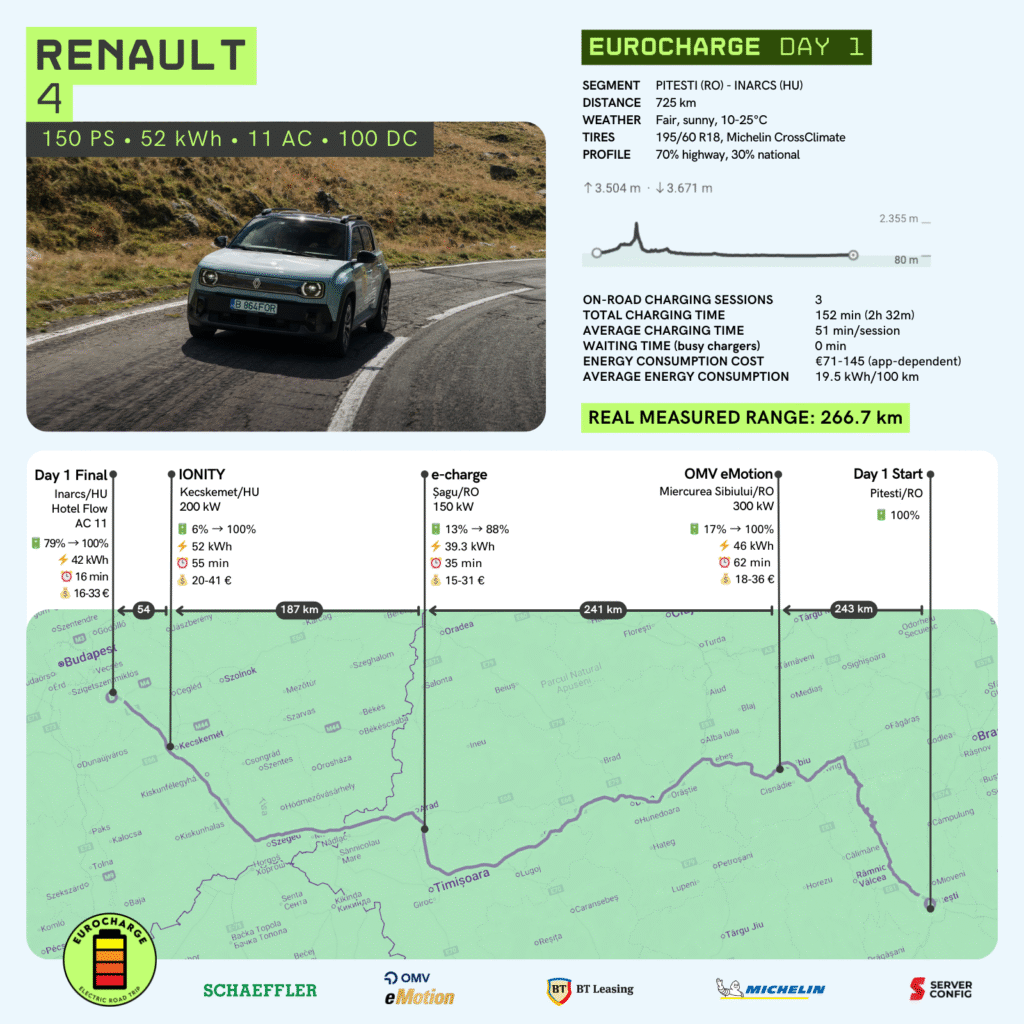
Gabriel Nica (With and about cars) on Volkswagen ID.4
Predictable and reliable. That’s how I’d characterize today’s drive aboard the Volkswagen ID.4. Volkswagen knows how to deliver exactly what customers expect. If you look at models like the Golf or Polo you immediately realize that what makes them adored by thousands of customers around the world is precisely the fact that they are predictable and don’t give you a hassle. They deliver exactly what they say they will.
They may not be the most exciting, dynamic or fun cars, but they are Teutonic in the purest sense of the word.
From Bucharest to Budapest, the ID.4 didn’t flinch, no matter what I put it through. It charged with a particular hunger every single time, was comfortable, refined and quite efficient (22.5 kWh/100 km was the average energy consumption). As I said: you can rely on it and the German seriousness that characterizes it.
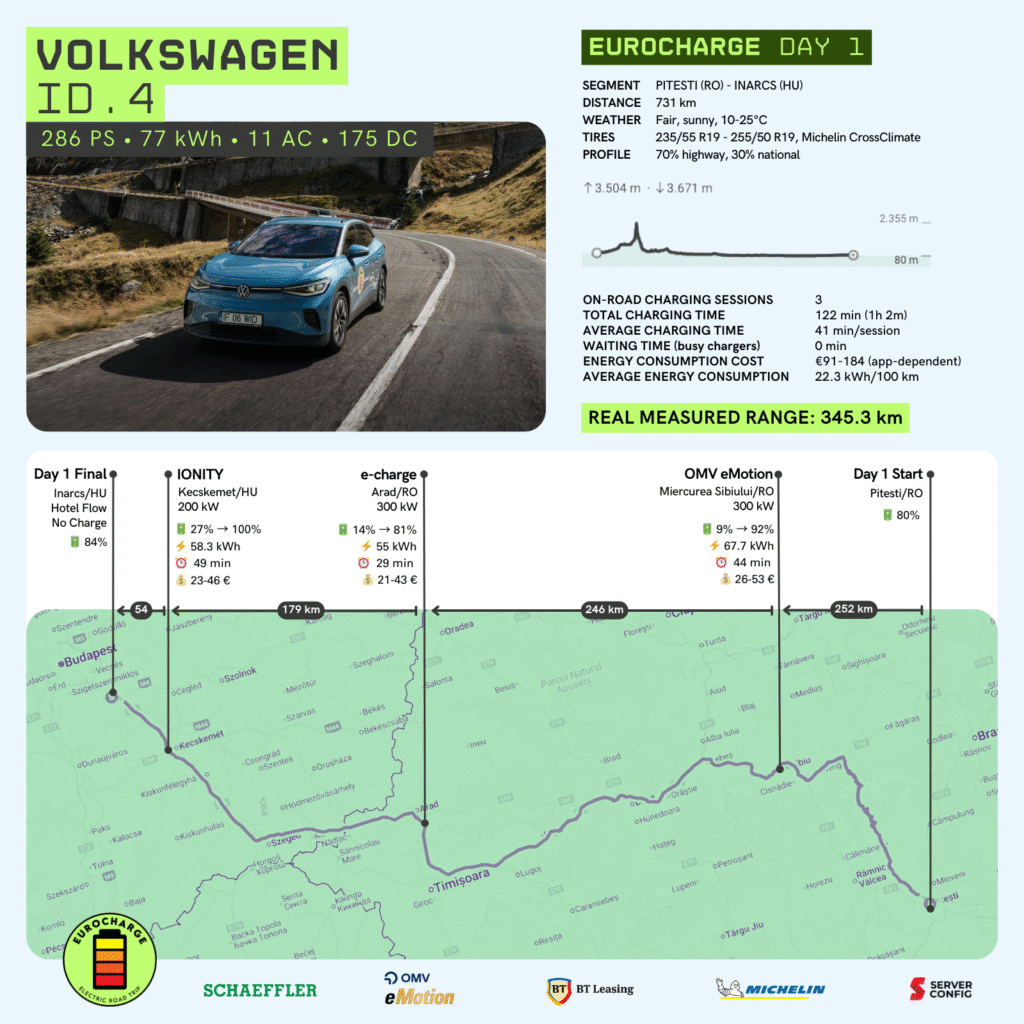
Tibi Buzdugan (Electromobilitate.com) on the Volvo EX90
The Volvo EX90 is currently the Swedish brand’s largest electric model. It retains all the features of an XC90 – generous interior space, comfort, excellent soundproofing and a high level of safety – plus the advantages of an electric platform: no vibration and engine noise, plus instant torque distributed to all four wheels.
For a car that’s five meters long, weighs almost three tons and has a classic SUV shape, the EX90 offers a decent range of about 400 kilometers combined (highway and Transfăgărășan, i.e. twisty mountain roads). Granted, it has a 111-kWh battery pack and I averaged about 25 kWh/100 km, but honestly, I don’t think anyone expects a living room on wheels to offer the same energy efficiency as a Dacia Spring going downhill.
When you get to a fast-charging station of at least 150 kW, the waiting time is reasonable: on average, about 30 minutes to charge 50% of the battery. On paper, it has a maximum charging power of 250 kW, but it behaves just like a Tesla: you see the value on the screen when you arrive with the battery almost empty, blink, and then watch it quickly drop to 150 kW at 20%, and then continue to gradually drop below 100 kW at 75%.
I thought the handling was excellent. It’s definitely a car that keeps fatigue away after driving over 1,000 kilometers. The autopilot is exceptional, I’d say the most natural I’ve tested so far. It doesn’t jerk at all, changes lanes very smoothly and can be used without any problems even on very twisty roads like the Transfăgărășan. And if you get stuck in traffic and end up spending more than three hours between charging breaks, one of the five seat massage programs can work wonders and bring you back to life. And let’s not forget the headlights: when you see High Definition Pixel on the options list, you can be sure that night driving is just as relaxing as driving in the middle of the day.
What I missed most were the physical buttons. Minimalism is a trend taken to the extreme by Tesla and picked up by most automakers, but it often seems like design decisions are made by people who only design the cars, not drive them. For most Volvo owners, the brand is synonymous with car safety, and searching the menu for buttons and tweaks isn’t exactly ideal behind the wheel. This is confirmed by the on-screen alerts that pop up when you take your eyes off the road for more than 2-3 seconds. From this point of view, I would have much preferred the old design line of the 2020 generations, which still had physical controls for adjusting the air vents, four buttons for window control (instead of three now, 2+1, a solution also adopted by Volkswagen) and separate buttons for adjusting the rearview mirrors and steering wheel.
All in all, the EX90 strikes me as a car for someone who needs a lot of space, values comfort and safety, and either accepts the compromise of interior minimalism or is a fan of this design style.
